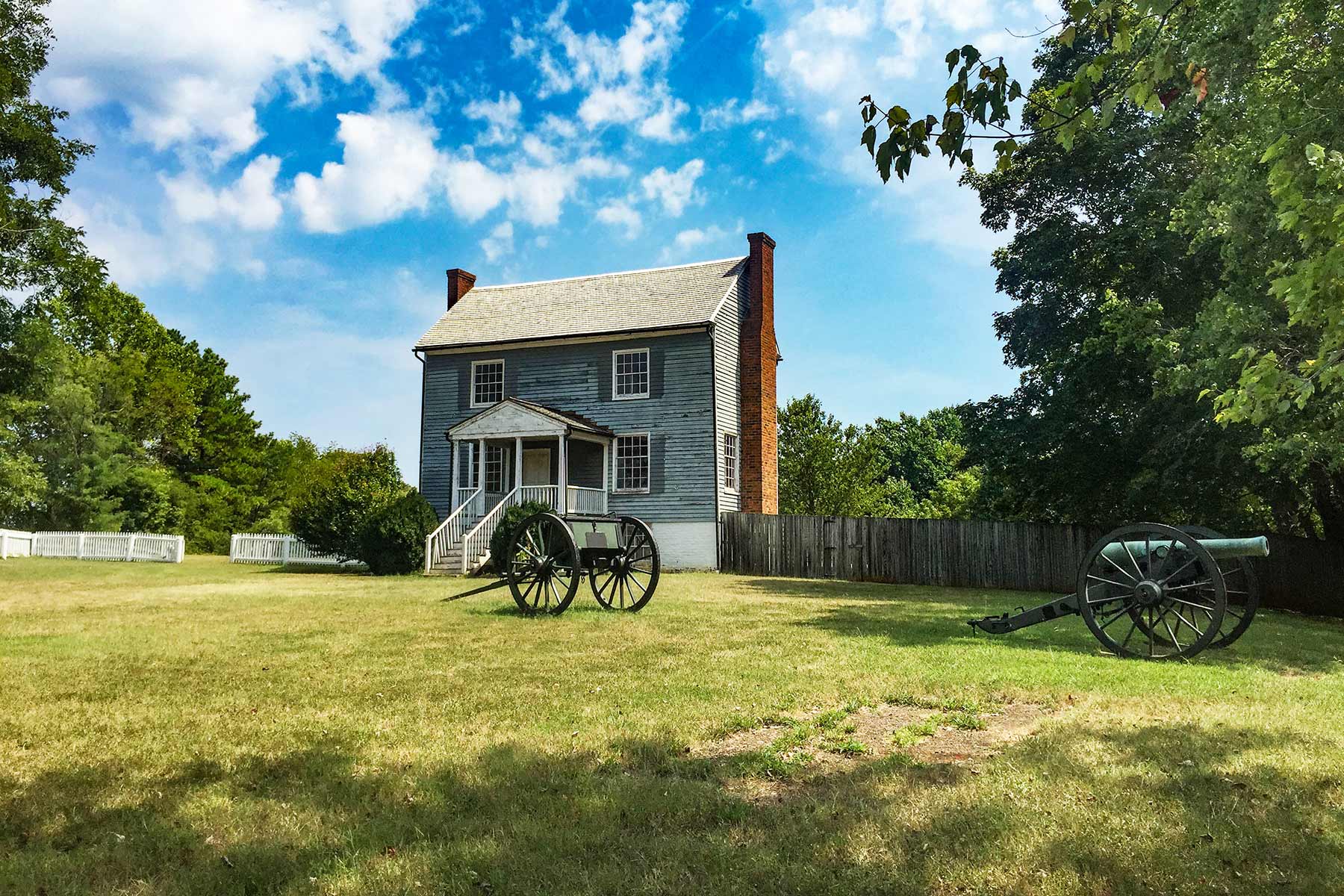
Article Summary: Historic Sites In Virginia
Historic Sites In Virginia. More Than Just Parks has 15 incredible must-see Virginia Historic sites for you.
I’ve been to so many of these amazing places since retiring from teaching in 2018. Did I mention that I taught history? I spent a lifetime teaching about the history behind these momentous sites.
Then I got to see them firsthand. And now I’m sharing the stories of these incredible places with you. It doesn’t get any better than that!
I’m going to give you my list of the Top 15 Historic Sites in Virginia that you’ll want to see. These are our top sites which we will provide in reverse order. We’ve got amazing monuments, fascinating exhibits, historic museums, legendary battlefields and so much more.
To be clear, this list includes national park sites (as in sites managed by the National Park Service) as opposed to national parks. It also includes sites not managed by the National Park Service. After all, we’re more than just parks!
If you are planning a trip to Virginia then you might want to pick up a copy of 101 Things to Do in Virginia Before You Up and Die by Ellen Patrick.
Without further ado, let’s dive in.
Table Of Contents: Historic Sites In Virginia
Top 15 Historic Sites In Virginia
15. Jamestown Settlement
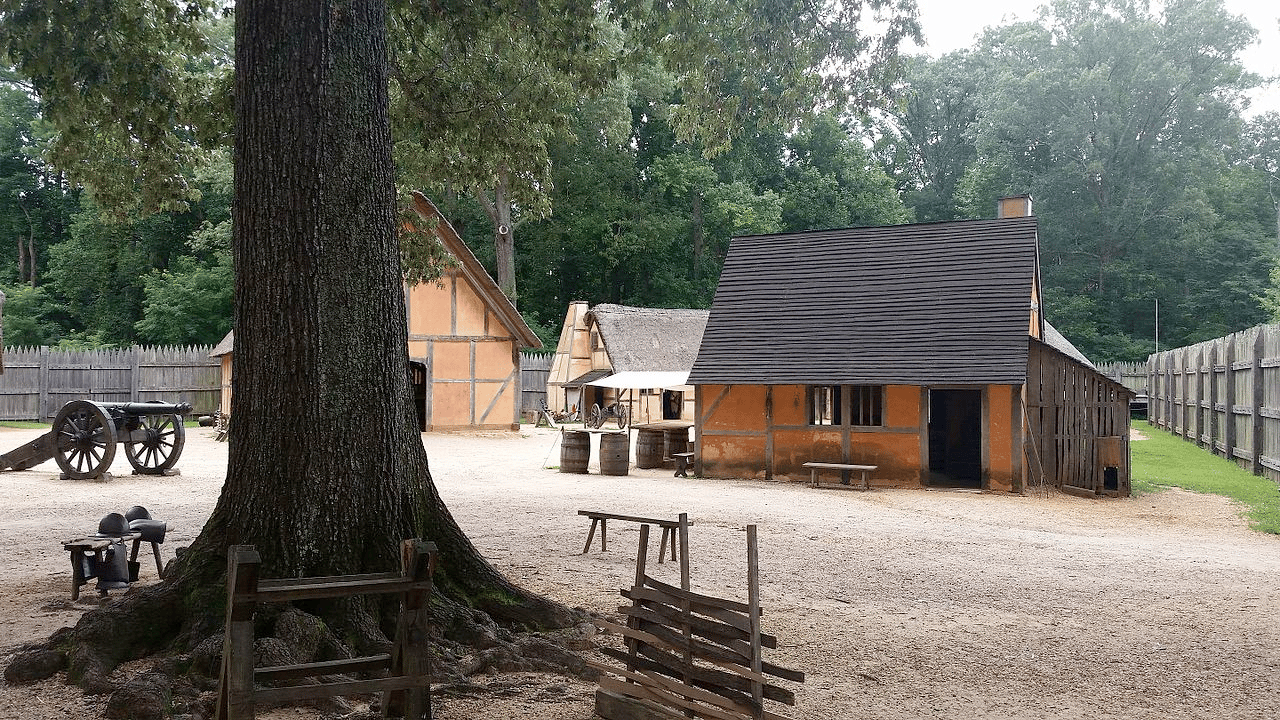
When it comes to magnificent historic sites, few states can match the Old Dominion. Virginia is a state with a rich and vibrant history. More Than Just Parks is excited to share our list of the Top 15 Historic Sites In Virginia with you. And we kick-off our list at #15 with a site which played an important role in the founding of America – The Jamestown Settlement.
The Jamestown Settlement was the first permanent English settlement in North America, located in what is now the state of Virginia. Its history began in 1607, when a group of 104 English colonists, sponsored by the Virginia Company of London, arrived on the shores of the Chesapeake Bay.
The initial years of the settlement were difficult, with disease, famine, and conflict with Native American tribes taking a heavy toll on the colonists. Many of the original settlers died, and the settlement was on the verge of collapse.
In 1610, a new governor, Sir Thomas Gates, arrived in Jamestown with a fleet of supply ships, which saved the colony from starvation. He was followed by another governor, Sir Thomas Dale, who implemented strict laws and harsh punishments in order to maintain order and discipline among the colonists.
In 1619, the first representative assembly in the English colonies, known as the House of Burgesses, was established in Jamestown. This marked a significant step towards self-government and democracy in America.
Things To Do At Jamestown
The Jamestown Settlement offers a range of activities and experiences for visitors of all ages. Here are some things to do at the Jamestown Settlement:
- Explore the Living History Museum: The museum features a reconstructed 17th-century fort, Powhatan Indian village, and replica ships that tell the story of the early English settlement in Virginia.
- Visit the Gallery Exhibits: The museum’s exhibits showcase artifacts and interactive displays that explore the history and culture of the Jamestown Settlement, including the arrival of the first English colonists, the impact of the transatlantic slave trade, and the relationship between the English and Native Americans.
- Watch Historical Interpretations: Throughout the day, visitors can watch historical interpreters in period costumes as they demonstrate daily life in the early settlement, including cooking, blacksmithing, and farming.
- Take Part in Educational Programs: The Jamestown Settlement offers a variety of educational programs for children and adults, including hands-on workshops, guided tours, and classroom resources.
- Visit the Archaearium: The Archaearium is an archaeological museum that showcases the artifacts and findings from the excavation of the original Jamestown settlement site.
- Enjoy Outdoor Activities: The museum also offers outdoor activities such as a nature trail, picnic areas, and a gift shop where visitors can purchase souvenirs and books about the history of the Jamestown Settlement.
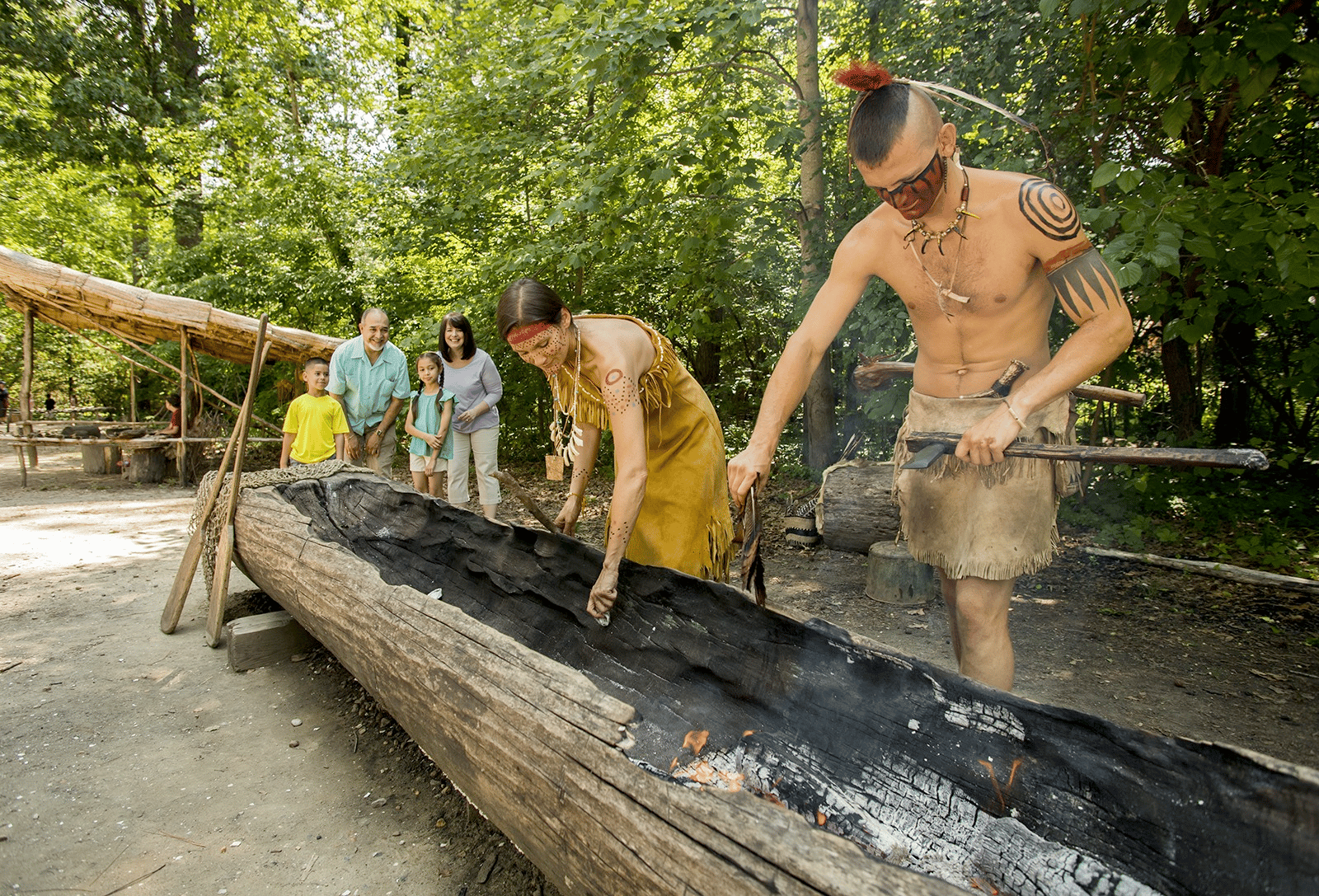
14. Historic Edgar Allen Poe Museum
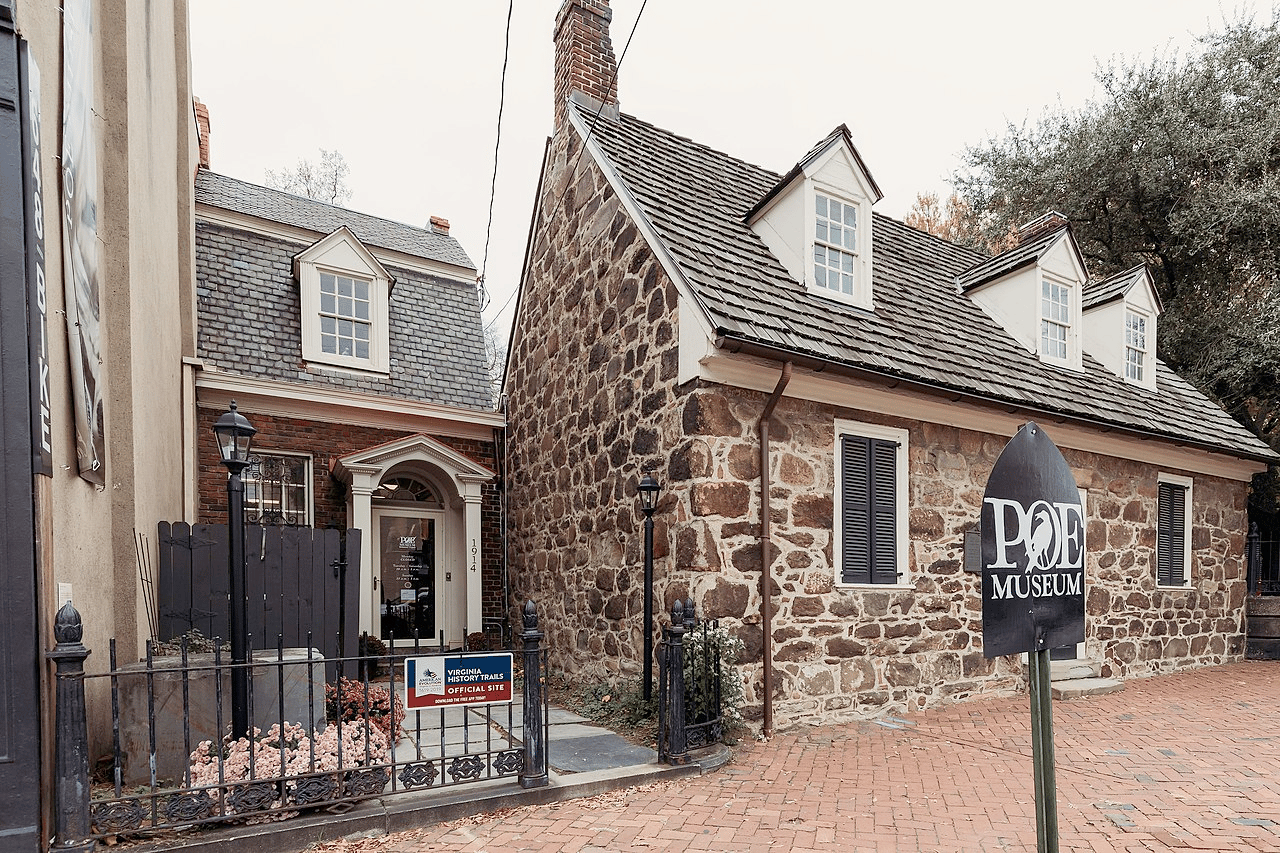
We move from the origins of America to a site which honors one of its greatest literary figures. At #14 on our list of the Best Historic Sites In Virginia is the Edgar Allen Poe Museum.
Edgar Allen Poe
Edgar Allan Poe (1809-1849) was an American writer and poet who is widely regarded as a master of the macabre and horror genres. He is also known for his contributions to the development of the modern detective story and science fiction.
Poe was born in Boston, Massachusetts, and he had a difficult childhood marked by financial struggles and the death of his mother at a young age. He attended the University of Virginia, but he left after a year due to financial difficulties. He later joined the U.S. Army, where he served for two years before being discharged.
Poe’s writing career began in earnest in the 1830s, and he became known for his dark, atmospheric stories and poems that often dealt with themes of death, madness, and the supernatural. Some of his most famous works include “The Raven,” “The Fall of the House of Usher,” “The Tell-Tale Heart,” and “The Cask of Amontillado.”
In addition to his contributions to the horror and mystery genres, Poe is also credited with introducing new literary techniques, such as the unreliable narrator, to the field of literature. His works have been highly influential and have inspired countless writers and artists over the years.
Despite his literary success, Poe struggled with alcoholism and financial instability throughout his life, and he died in 1849 under mysterious circumstances. Today, he is widely regarded as one of America’s greatest writers and an important figure in the development of American literature.
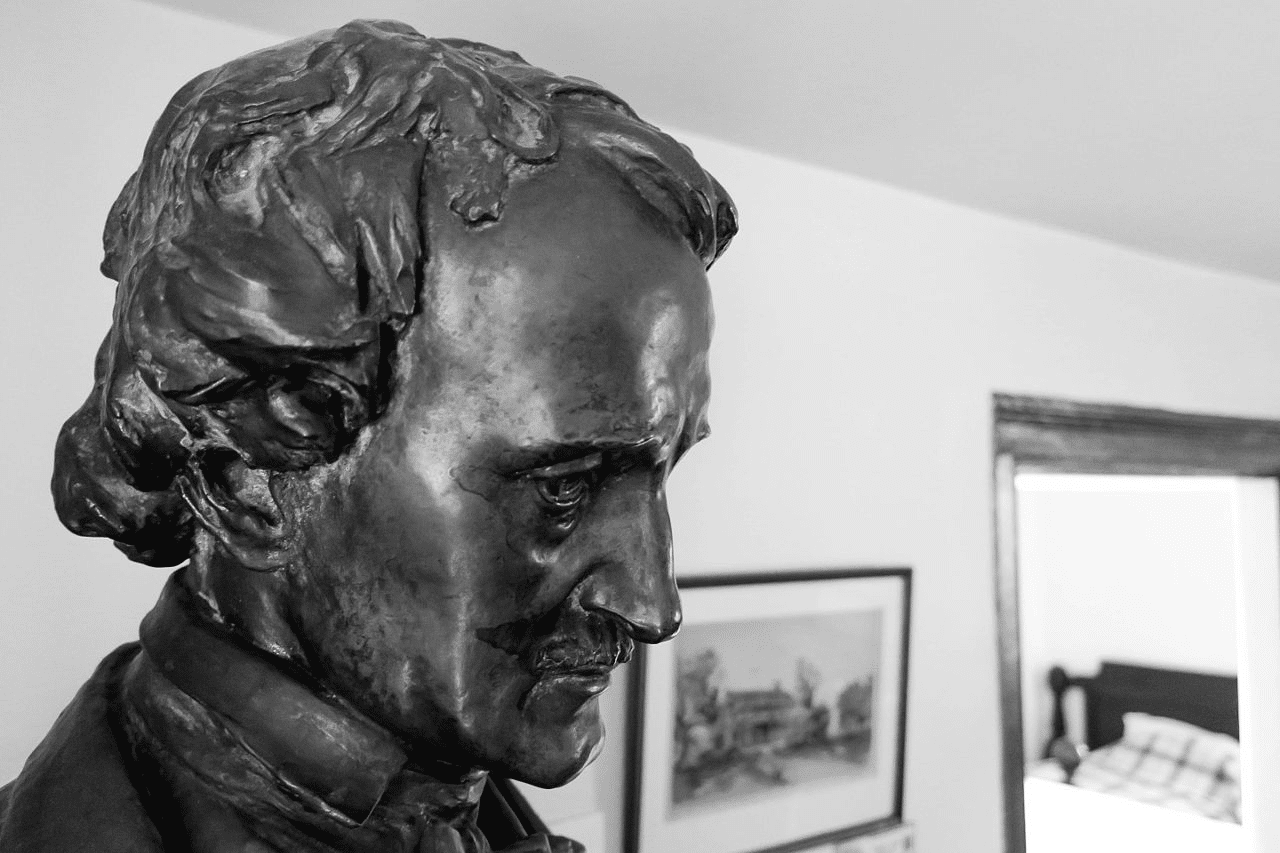
The Edgar Allen Poe Museum
The Edgar Allan Poe Museum is located in the Old Stone House, a building that was constructed in 1754 and is one of the oldest structures in Richmond.
The museum contains a wide range of artifacts related to Poe’s life and career, including manuscripts, letters, first editions, and personal belongings. The collection also includes memorabilia and artifacts related to Poe’s family and friends, as well as items related to the cultural and historical context of his life and work.
One of the highlights of the museum is the Enchanted Garden, a beautiful outdoor space that features plants and trees mentioned in Poe’s works, as well as a life-size statue of the author himself. The garden is a popular spot for visitors to relax and reflect on Poe’s literary legacy.
In addition to its exhibits and collections, the museum also hosts a range of events and educational programs throughout the year. These include readings, lectures, and workshops on topics related to Poe and his works, as well as special events for children and families.
13. Monticello
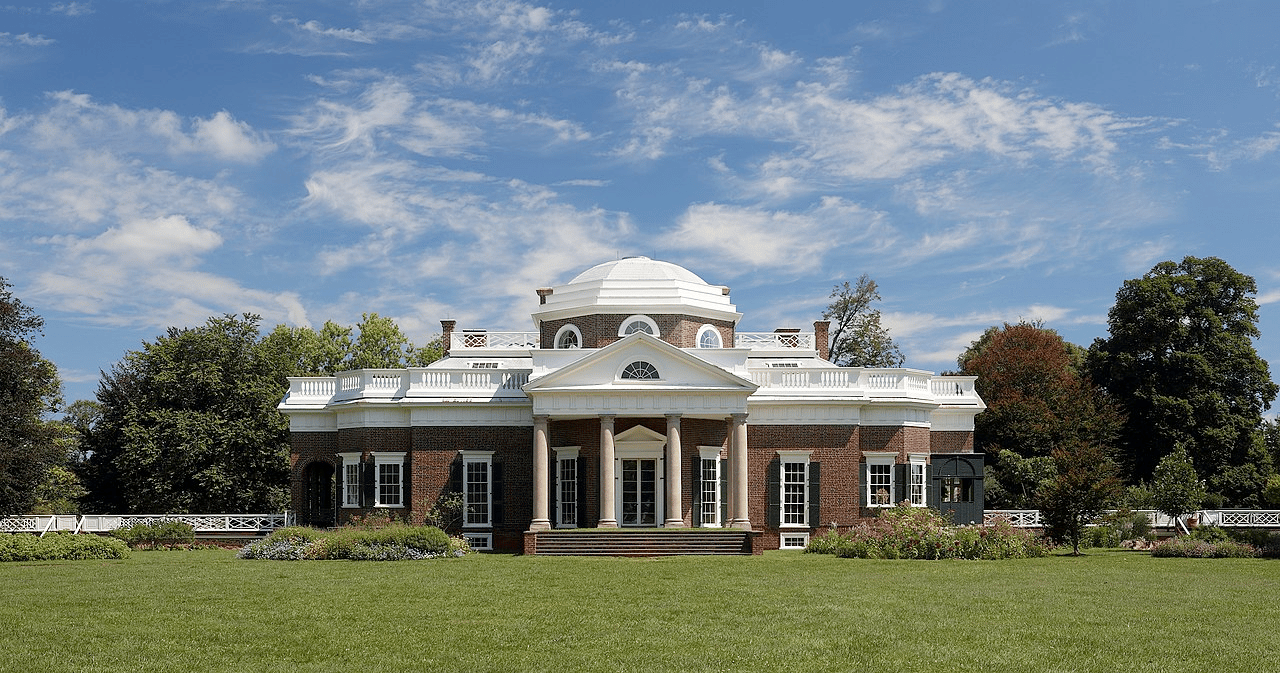
We move from a place which celebrates a master of the literary genre to one of the most famous homes in America. It celebrates the 3rd President of the United States who was also the author of the Declaration of Independence among other notable achievements. At #13 on our list of the Best Historic Sites In Virginia is Monticello.
Monticello is a historic plantation located in Charlottesville, Virginia, that was the home of Thomas Jefferson, one of the Founding Fathers of the United States and the third president of the country. The history of Monticello spans more than 200 years, and it is considered one of the most important and iconic sites of American history.
A Short History Of Monticello
Jefferson began construction on Monticello in 1768, when he was just 26 years old. He designed the house himself, drawing inspiration from the classical architecture of ancient Rome and Greece. Construction on the house continued for many years, and Jefferson made numerous changes and additions to the design over the course of his life.
Monticello served as Jefferson’s primary residence for much of his adult life, and it was here that he wrote the Declaration of Independence and many of his other important works. The plantation was also a working farm, with crops including tobacco, wheat, and corn, and it was home to a large number of enslaved people, who performed much of the labor on the estate.
Following Jefferson’s death in 1826, Monticello fell into disrepair and was eventually sold to pay off debts owed by his family. The property changed hands several times over the years, and at one point it was used as a hotel.
In 1923, the Thomas Jefferson Foundation purchased Monticello with the goal of restoring the property to its original condition and preserving it as a national treasure.
Things To Do At Monticello
There are many things to do at Monticello, including:
- Tour the House: Visitors can tour the historic house and see the rooms where Thomas Jefferson lived, including his study, bedroom, and library. There are guided tours and self-guided audio tours available.
- Visit the Gardens: Monticello’s gardens are famous for their beauty and historical significance. The gardens include a flower garden, vegetable garden, and orchard, and they are open for visitors to explore.
- Explore the Grounds: Monticello’s grounds include a number of outbuildings, including the slave quarters, kitchen, and smokehouse. Visitors can explore these buildings and learn about the daily life of those who lived and worked at Monticello.
- Attend Special Events: Monticello hosts a number of special events throughout the year, including concerts, lectures, and workshops. These events offer visitors a chance to learn more about Jefferson, his legacy, and the history of Monticello.
- Visit the Museum and Visitor Center: The museum and visitor center at Monticello offer a wealth of information about Jefferson’s life and the history of Monticello. The exhibits include artifacts, multimedia presentations, and interactive displays.
- Go on a Hike: Monticello’s grounds include several hiking trails that offer stunning views of the surrounding landscape. The trails range from easy to moderate and offer visitors a chance to experience the natural beauty of the area.
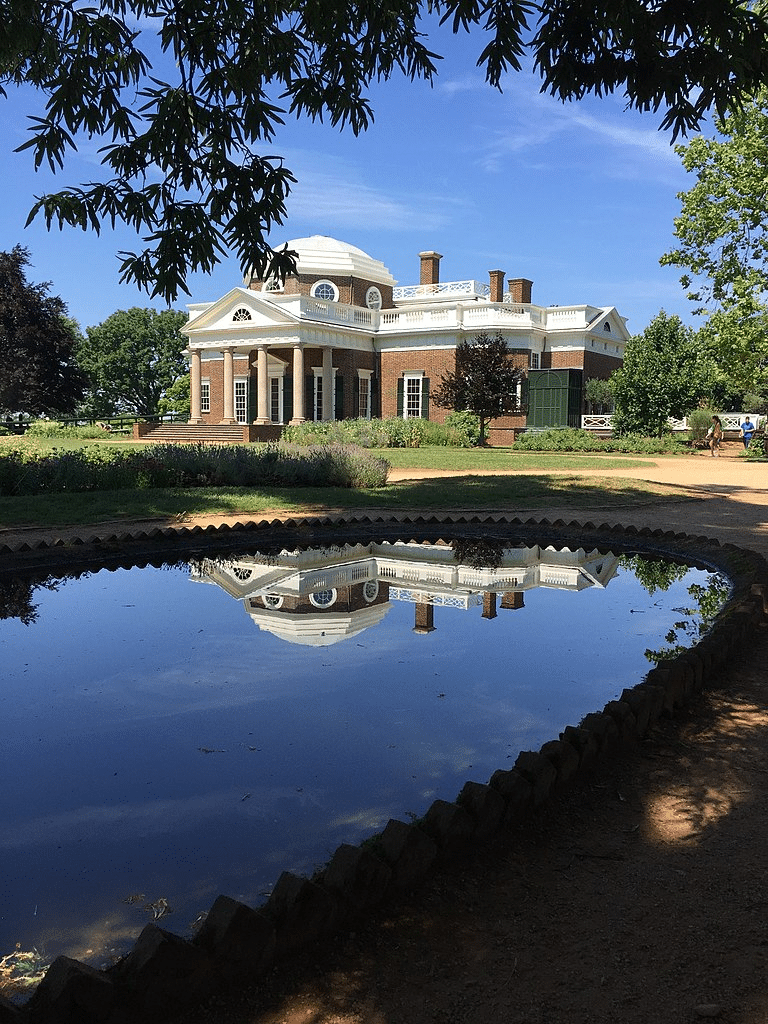
12. Historic Arlington National Cemetery

Monticello is not an easy site to top, but our next historic site has been described as the most famous cemetery in the country. It’s the final resting place for many of our nation’s greatest heroes, including more than 300,000 veterans of every American conflict, from the Revolutionary War to Iraq and Afghanistan. At #12 on our list of the Best Historic Sites In Virginia is Arlington National Cemetery.
The cemetery is the final resting place for over 400,000 service members, veterans, and their families, as well as a number of notable Americans.
The history of Arlington National Cemetery dates back to 1864, during the Civil War. The property was originally owned by General Robert E. Lee, the commander of the Confederate Army, but was seized by the Union Army and used as a military camp and burial ground.
The first military burial at the site took place on May 13, 1864, and over the next few years, thousands of Union soldiers who died in battle were interred at the site.
In 1882, the cemetery was designated as a national cemetery and renamed Arlington National Cemetery. Over the years, the cemetery has expanded to include a number of notable memorials and monuments, including the Tomb of the Unknown Soldier, the Memorial Amphitheater, and the Arlington House, which served as the home of Robert E. Lee before the Civil War.
The Site Of Important Events
Arlington National Cemetery has been the site of a number of important events throughout American history, including state funerals for presidents and other notable figures, wreath-laying ceremonies on Memorial Day and Veterans Day, and other important national observances.
The cemetery also continues to serve as an active military cemetery, with service members from all branches of the military buried on the grounds.
Today, Arlington National Cemetery is one of the most visited and respected military cemeteries in the world. It serves as a powerful reminder of the sacrifice and service of the men and women who have served in the United States Armed Forces, and it remains a solemn and sacred place of remembrance and reflection for all who visit.
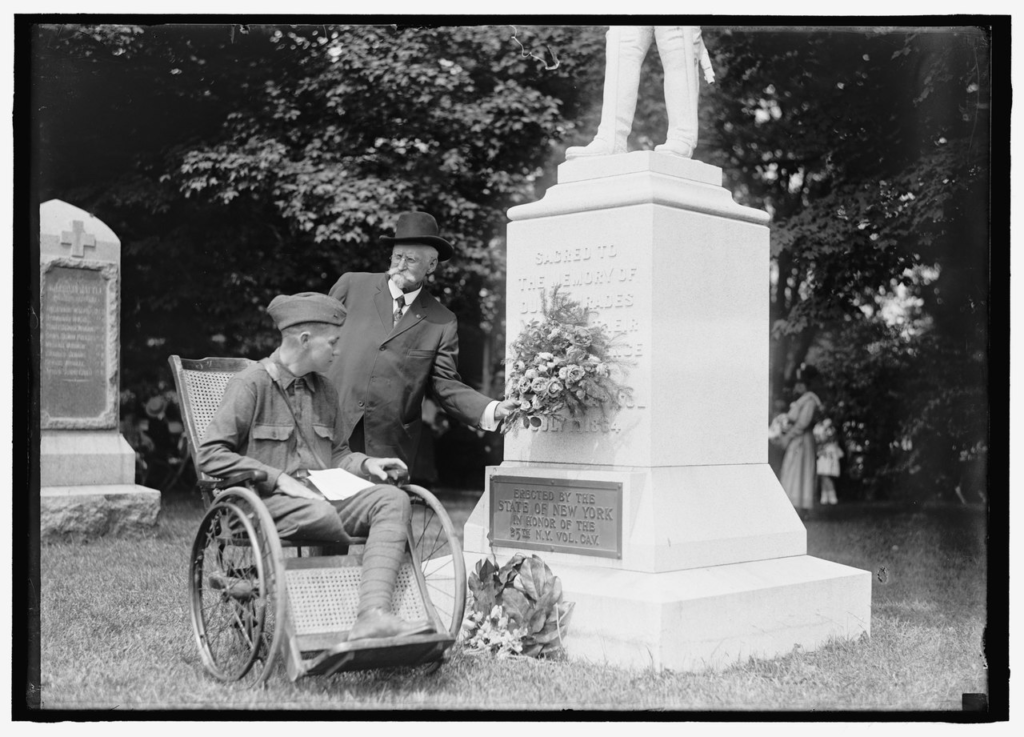
Things To Do At Arlington
Here are some things you can do while visiting:
- Visit the gravesites of notable figures: Arlington National Cemetery is the final resting place of many notable figures, including Presidents John F. Kennedy and William Howard Taft, Supreme Court Justice Thurgood Marshall, and astronaut Neil Armstrong.
- Attend the Changing of the Guard ceremony at the Tomb of the Unknown Soldier: This solemn ceremony takes place every hour on the hour from April 1 to September 30 and every two hours from October 1 to March 31.
- Visit the Arlington House: This historic mansion was once the home of Robert E. Lee and his family. Today, it serves as a museum dedicated to the history of Arlington National Cemetery and the Lee family.
- Take a guided tour: The cemetery offers a variety of guided tours, including walking tours, bus tours, and private tours. These tours offer visitors the opportunity to learn more about the cemetery’s history and the stories of the people buried there.
- Witness wreath-laying ceremonies: Throughout the year, various organizations lay wreaths at the gravesites of fallen soldiers. These ceremonies are open to the public and provide a powerful reminder of the sacrifices made by our nation’s servicemen and women.
- Visit the Memorial Amphitheater: This iconic structure is the site of many important ceremonies and events, including the annual Memorial Day and Veterans Day ceremonies.
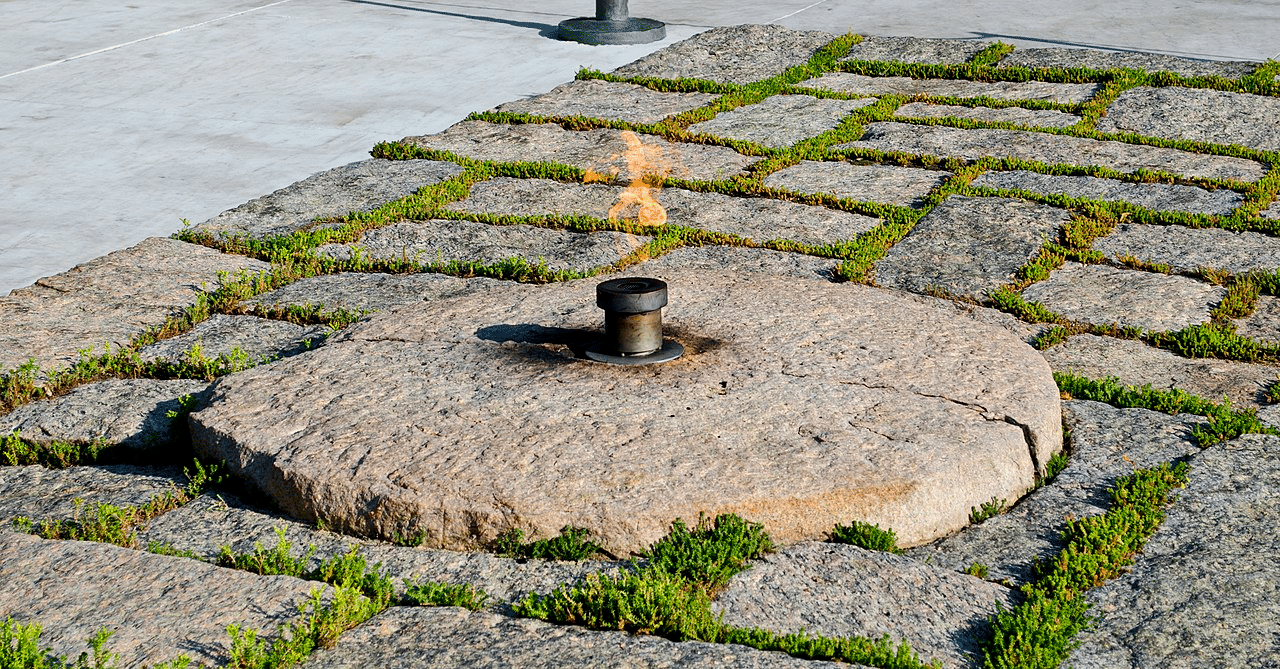
11. Mount Vernon
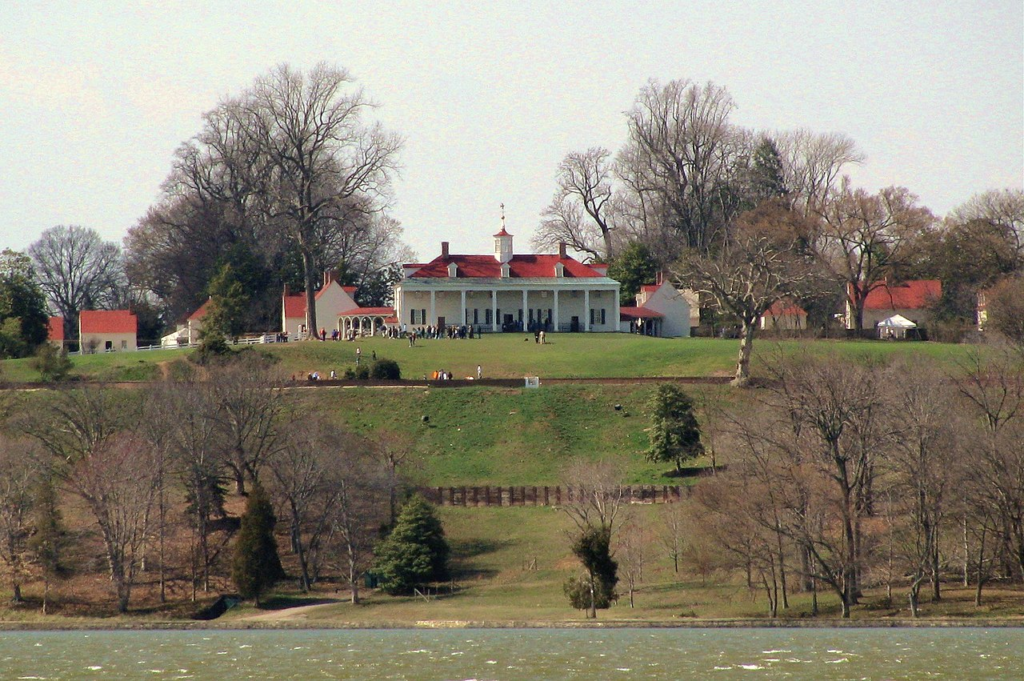
Next up on our list of the Best Historic Sites In Virginia is the home of the Father of our Country. At #11 on our list is Mount Vernon which was the home of George Washington, the first President of the United States, and his wife, Martha Washington.
The history of Mount Vernon dates back to the mid-18th century, when George Washington first acquired the property.
He originally acquired the Mount Vernon estate in 1754, but it wasn’t until the 1760s that he began construction on the iconic mansion. Over the years, Washington made a number of additions and improvements to the property, including a new east wing and the construction of the iconic piazza, which provided stunning views of the Potomac River.
Mount Vernon served as Washington’s primary residence for much of his adult life, and it was here that he entertained guests, managed his vast agricultural and business interests, and oversaw the construction of the new nation’s capital city, Washington, D.C.
The plantation was also home to hundreds of enslaved people, who worked on the property’s farms and plantations.
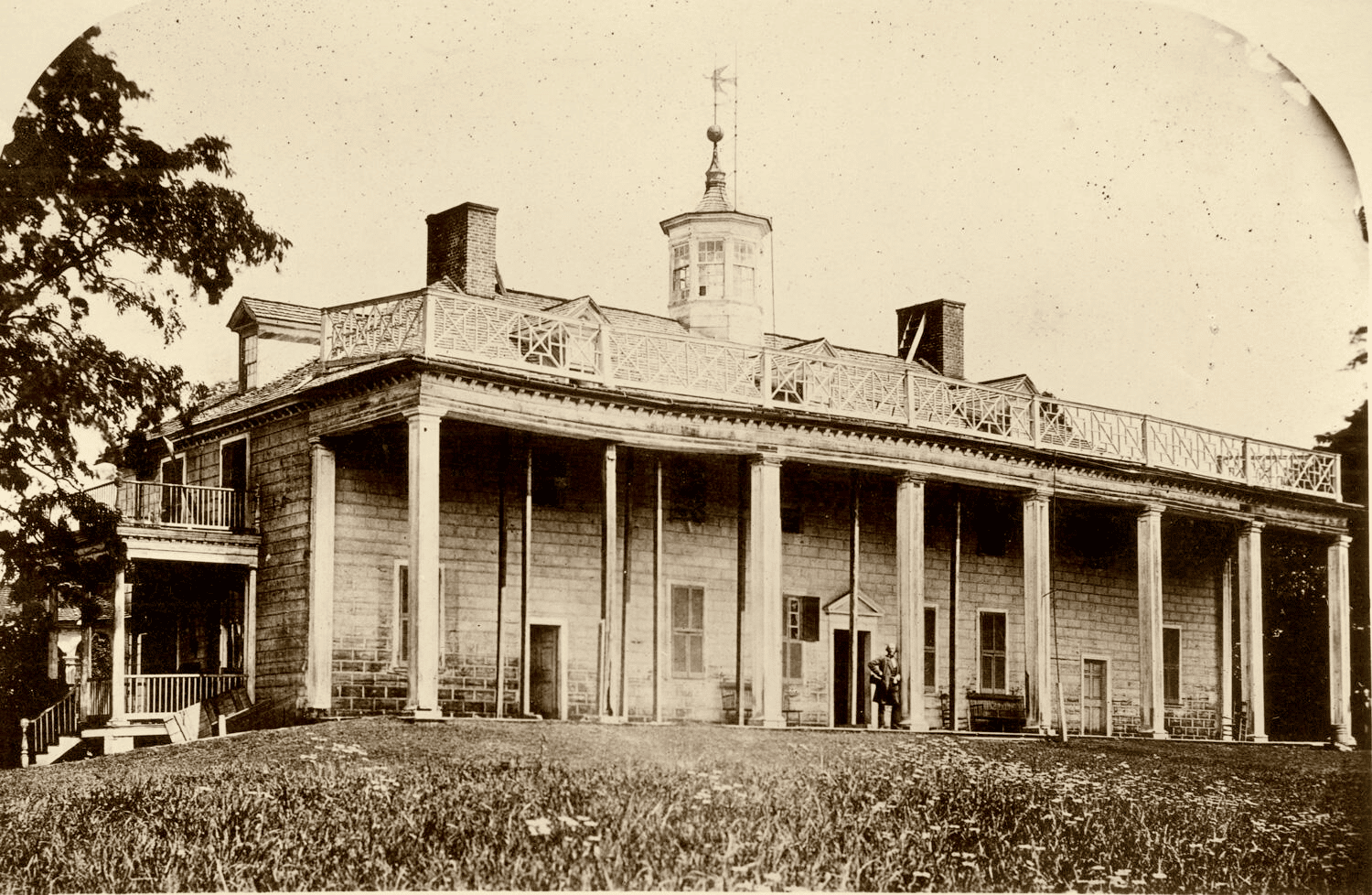
Mount Vernon Following Washington’s Death
Following Washington’s death in 1799, Mount Vernon was passed down to his family, and it remained in the family’s hands until the mid-19th century.
In 1858, the Mount Vernon Ladies’ Association was founded with the goal of preserving the historic property and opening it to the public. Today, Mount Vernon is a popular tourist destination, with guided tours of the mansion, the outbuildings, and the grounds, as well as exhibits and educational programs related to Washington’s life and legacy.
Mount Vernon is also a National Historic Landmark and a UNESCO World Heritage Site. It is considered one of the most important and iconic sites of American history, and it continues to serve as a powerful reminder of the life and legacy of one of the nation’s most important and influential founding fathers.
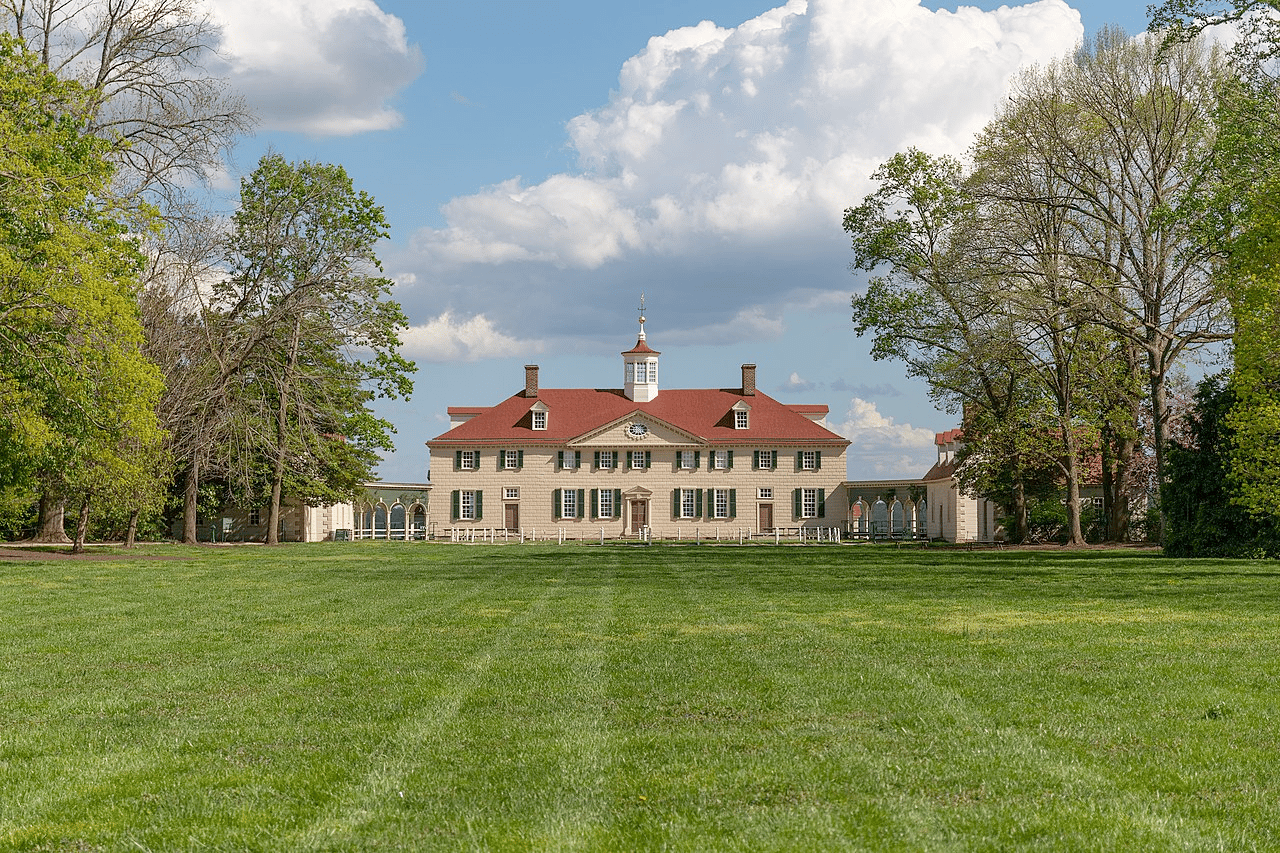
Top 10 Historic Sites In Virginia
10. Richmond National Battlefield Park
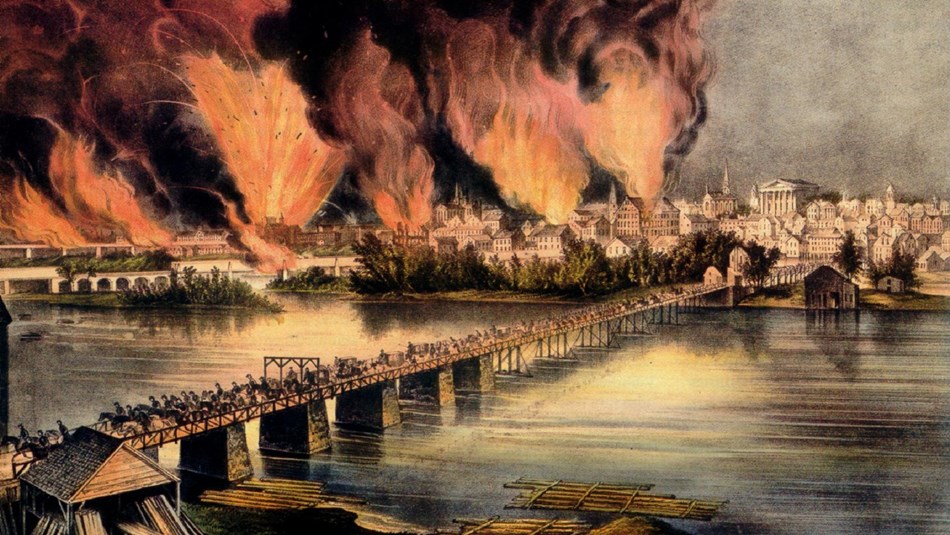
We move on to the Top 10 Historic Sites In Virginia and turn our attention from the Revolutionary War/Founding Fathers to the bloodiest conflict in American history – the American Civil War. If there’s one event associated with Virginia it’s this one. At #10 on our list is Richmond National Battlefield Park.
Richmond, Virginia served as the capital of the Confederate States of America for almost the whole of the American Civil War. It was a vital source of weapons and supplies for the war effort, and the terminus of five railroads. The Union made many attempts to invade Richmond.
Things To See & Do
Three visitor centers offer a wide variety of exhibits and helpful information on how to maximize your experience at the Richmond National Battlefield Park. These include:
- Cold Harbor Battlefield Visitor Center: There are exhibits and artifacts on display. Electric map programs describe the 1862 Battle of Gaines’ Mill and the 1864 Battle of Cold Harbor. There’s also an excellent bookstore and Ranger programs offered daily during the summer season.
- Fort Harrison Visitor Center: Self-guided historical walking trail begins at the visitor center. Allow 20 minutes to complete the trail. The visitor center contains exhibits, a relief map of the fort, and a short film about the battle.
- Visitor Contact Station at Tredegar Iron Works: Check out the American Civil War Museum at the Iron Works. It’s well worth you time as even Civil War History buffs find out new things they didn’t know about America’s bloodiest conflict.
Other Things To Do At Richmond
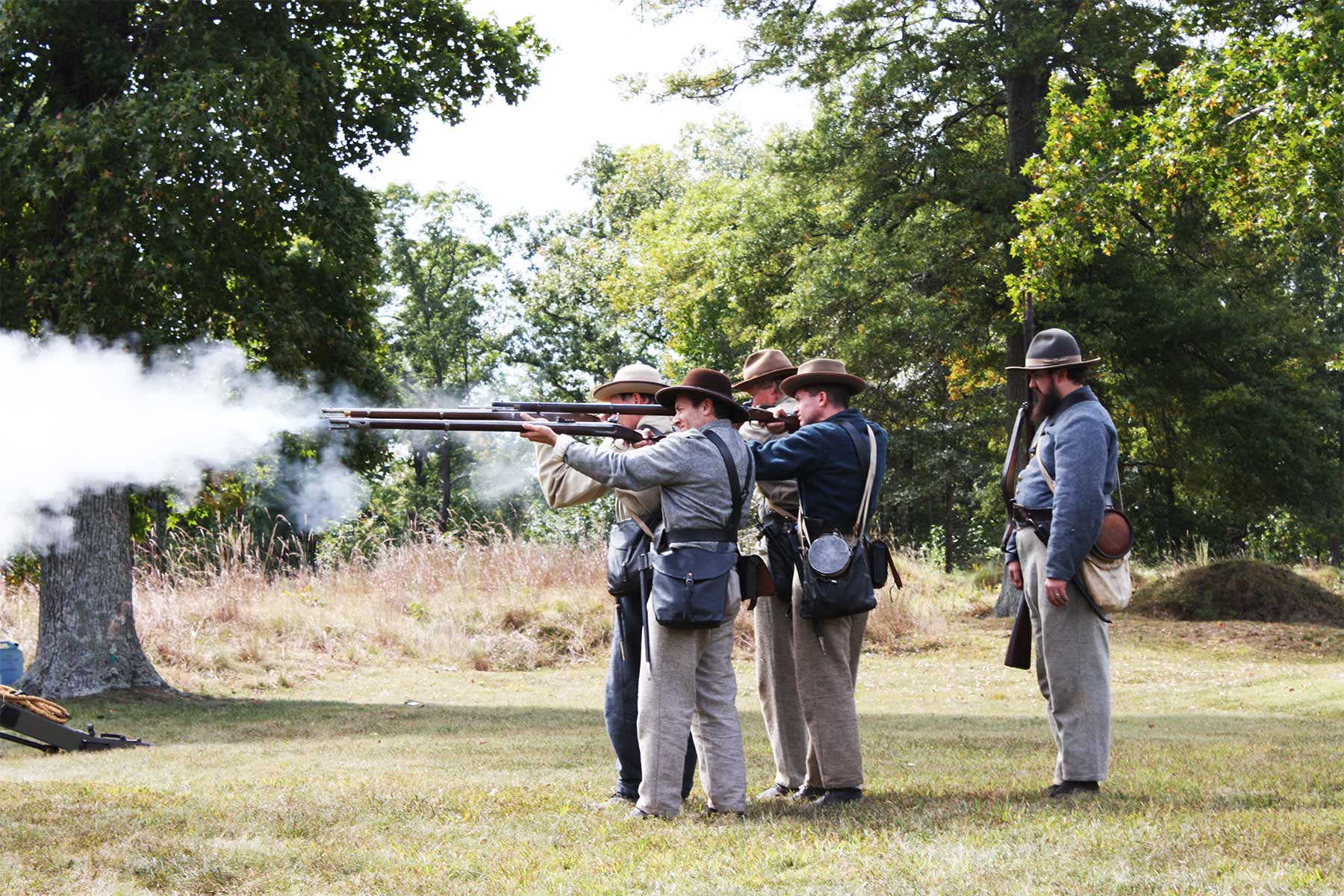
The park has several trails spread out among its 13 units that are ideal for hiking, running or walking your dog. These trails combine enjoyment of nature with sites of Civil War history.
Biking is permitted ONLY on the Totoptomoy Creek trail (as well as most park roads).
There are some excellent hiking trails at:
- Gaines Mill: The Gaines’ Mill battlefield has two connected loop trails where visitors can hike through historic hardwood forest overlooking Boatswain creek.
- Totopotomoy Creek: The Totopotomoy Creek battlefield has a 0.56 mile long loop trail that tours the fields and gardens around the Shelton House. Highlights include two pieces of Union-built entrenchments that survive along this trail and the family cemetery just in front of the entrenchments.
- Cold Harbor: The trails at Cold Harbor consist of three connected loops where visitors can wander through native forest, listening to the trickle of Bloody Run creek, and learn about the site’s Civil War history.
- Malvern Hill: The Malvern Hill Battlefield has two connected loop trails that are each 1.5 miles long. (Source: NPS)
9. Fort Monroe National Monument

If you enjoy military history then you’ll love our next historic site. At #9 on our list of the Best Historic Sites In Virginia is Fort Monroe National Monument.
The story begins over 400 years ago. In 1607, the English explorer Captain John Smith came ashore near here. After surveying the area in 1608, he pronounced this place a “little isle fit for a castle.”
In 1609 colonial settlers built a wooden structure large enough to hold fifty men and seven mounted cannons, and called it Fort Algernourne.
It Was The Only Military Installation In The Upper South To Remain In U.S. Control During The Civil War
During the American Civil War, it was the only federal military installation in the Upper South to remain under United States control throughout the conflict.
The fort headquartered the Union Department of Virginia and North Carolina, and several significant military campaigns and combined operations were launched from the installation.
It served as the headquarters for Union General George McClellan during his Peninsula Campaign.
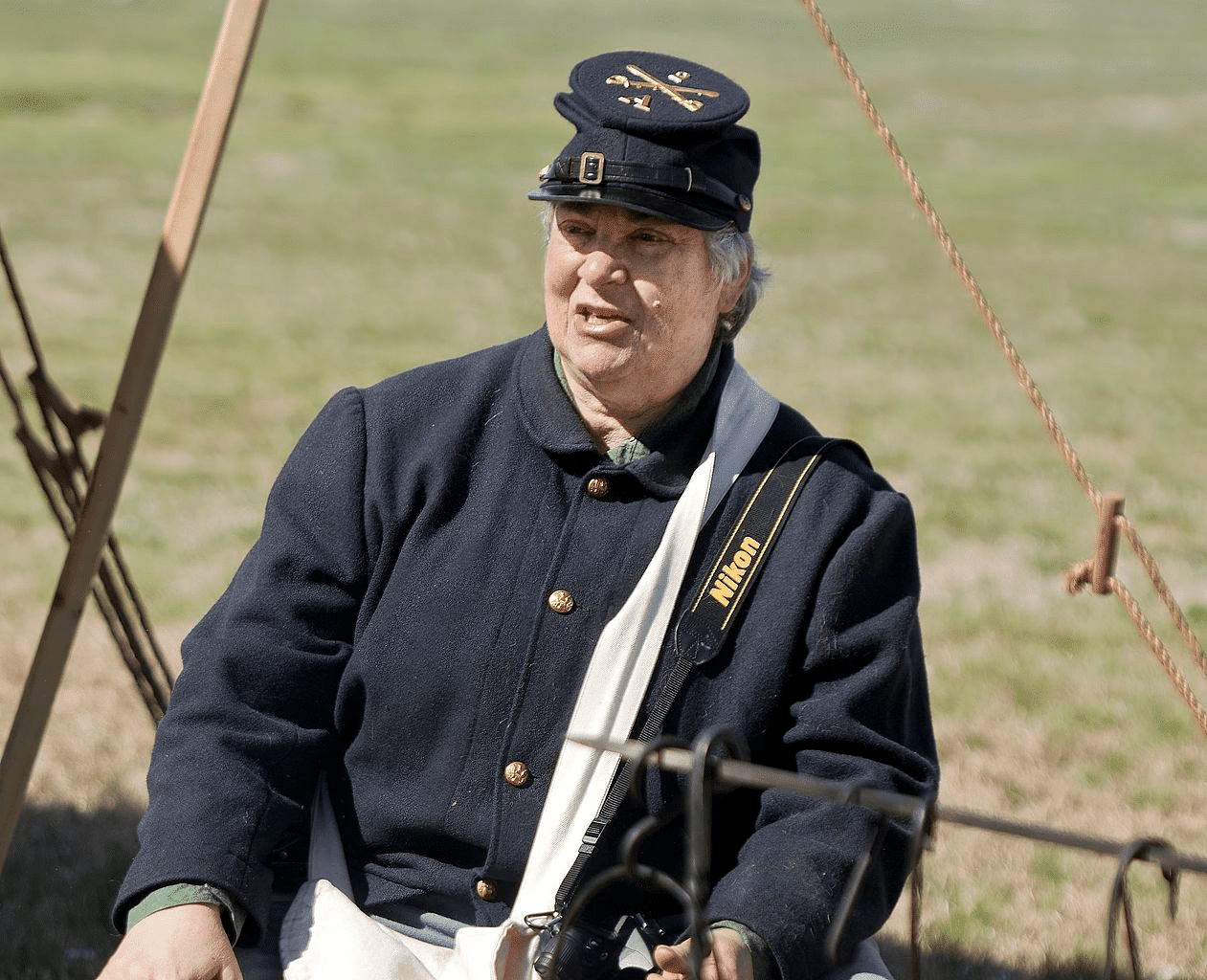
Fort Monroe Was A Proving Ground For One Of The South’s Greatest Generals
I am the first one to admit that I’m always learning and therefore I’m always appreciative when I receive feedback from the readers of my articles.
One of those readers pointed out to me that it was no one less than Robert E. Lee who, as a young and inexperienced graduate of West Point in 1831, began to prove his abilities at Fort Monroe.
In 1831, the job of finishing many features at Fort Monroe — including the moat, the outer moat wall, the north ramparts and the outer works — represented a formidable challenge. It would be Robert E. Lee who would rise to that challenge as a young officer looking to prove himself.
Lee designed buildings, wharves and outer fortifications in addition to supervising the completion of the immense Water Battery, whose stone and brick casemates mounted 42 seacoast guns in defense of the fort’s bayside walls.
As noted author and historian Douglass Southall Freeman writes in his masterful biography of Robert E. Lee, “In the better mastery of his profession, these years were a busy and a most important period with Lee. He came as an assistant of limited experience; he was to leave fully qualified to direct a large engineering project.”
Things To See & Do At Fort Monroe
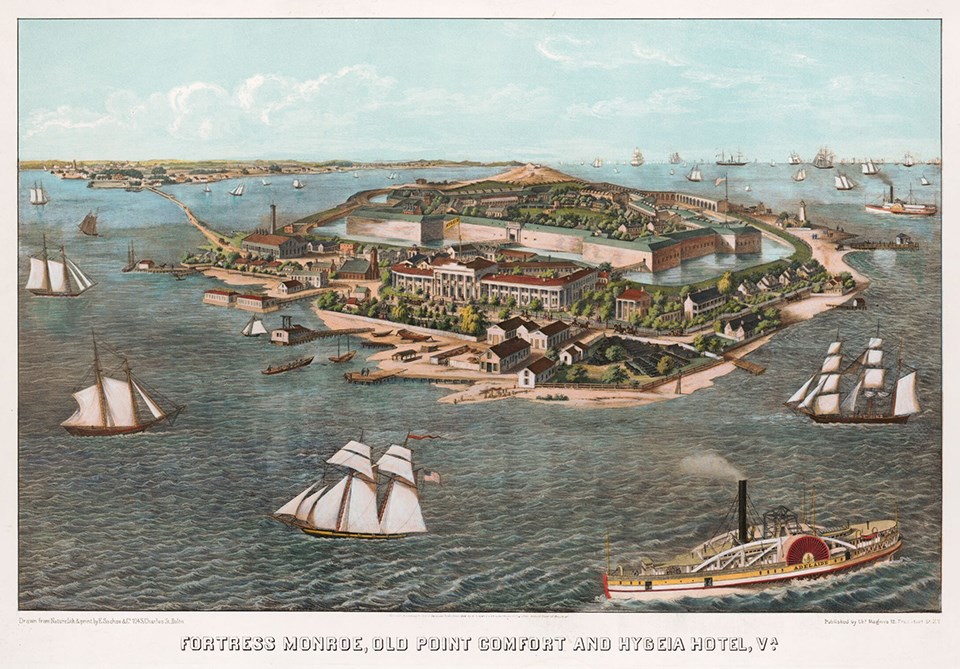
It’s a beautiful 565-acre national monument which offers biking, boating, swimming and walking. Of course, it also offers history too. Inside the fort visitors will find the Casemate Museum.
This amazing museum tells the story of Fort Monroe from the construction of Fort Algernourne, the first defensive fortification at the site in 1609, through the last major command to be headquartered at Fort Monroe, the Army’s Training and Doctrine Command.
The museum features the room where Jefferson Davis was held briefly as prisoner following the American Civil War, highlights the 1861 “Contraband of War” decision that granted three enslaved men, and thousands who followed, sanctuary at Fort Monroe, earning it the nickname “Freedom’s Fortress.”
8. Appomattox Court House National Historical Park
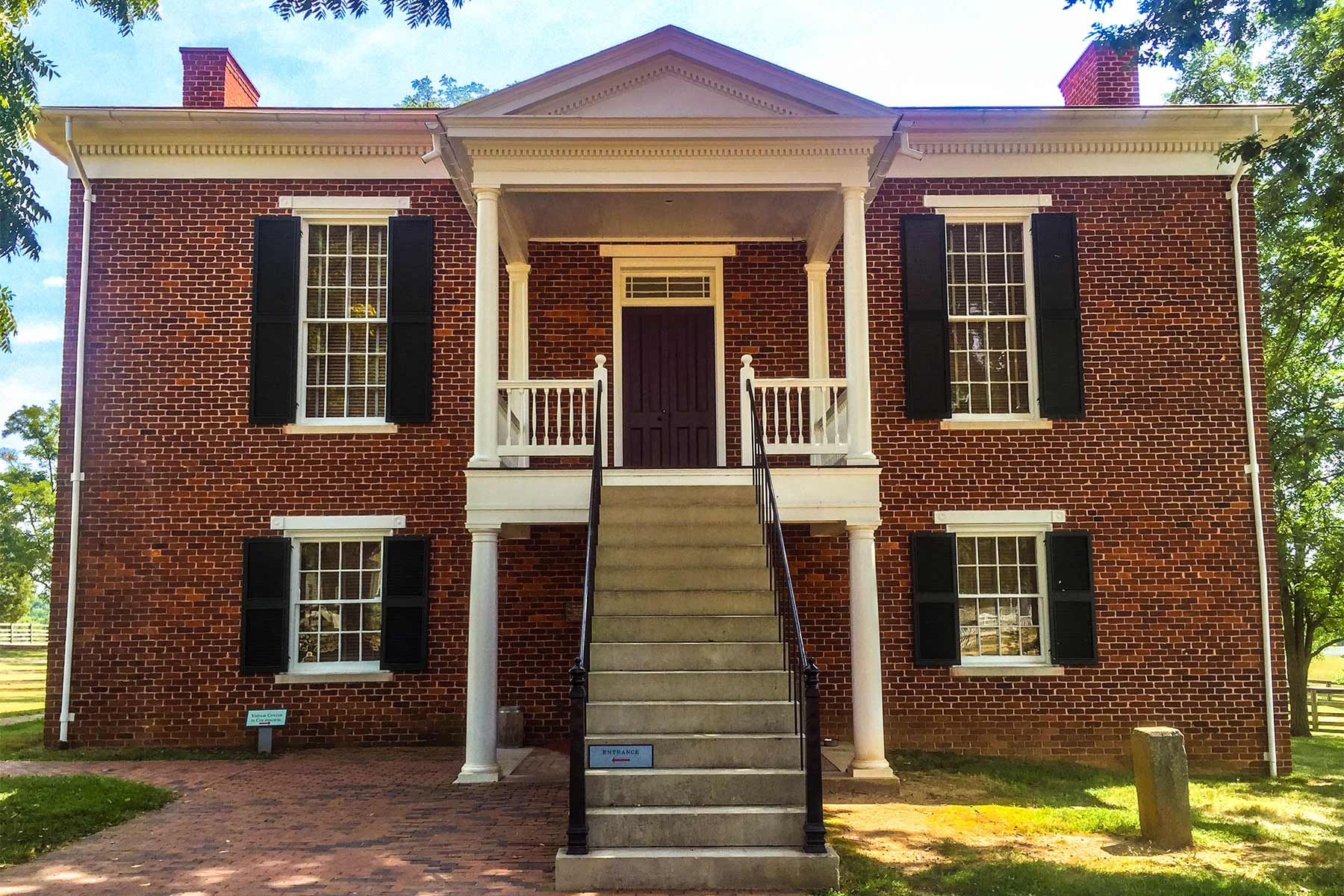
Virginia is a state steeped in the history of the Civil War and our next site is a perfect example. At #8 on our list of the Best Historic Sites In Virginia is the place where the bloodiest conflict in American history finally came to its conclusion.
On April 9, 1865, the surrender of the Army of Northern Virginia in the McLean House in the village of Appomattox Court House, Virginia, signaled the end of the nation’s largest war.
Two important questions about its future were answered. Could the nation survive a civil war intact? And would that nation exist without slavery? Thankfully, the answer to both of these questions was yes and America experienced a new birth of freedom.
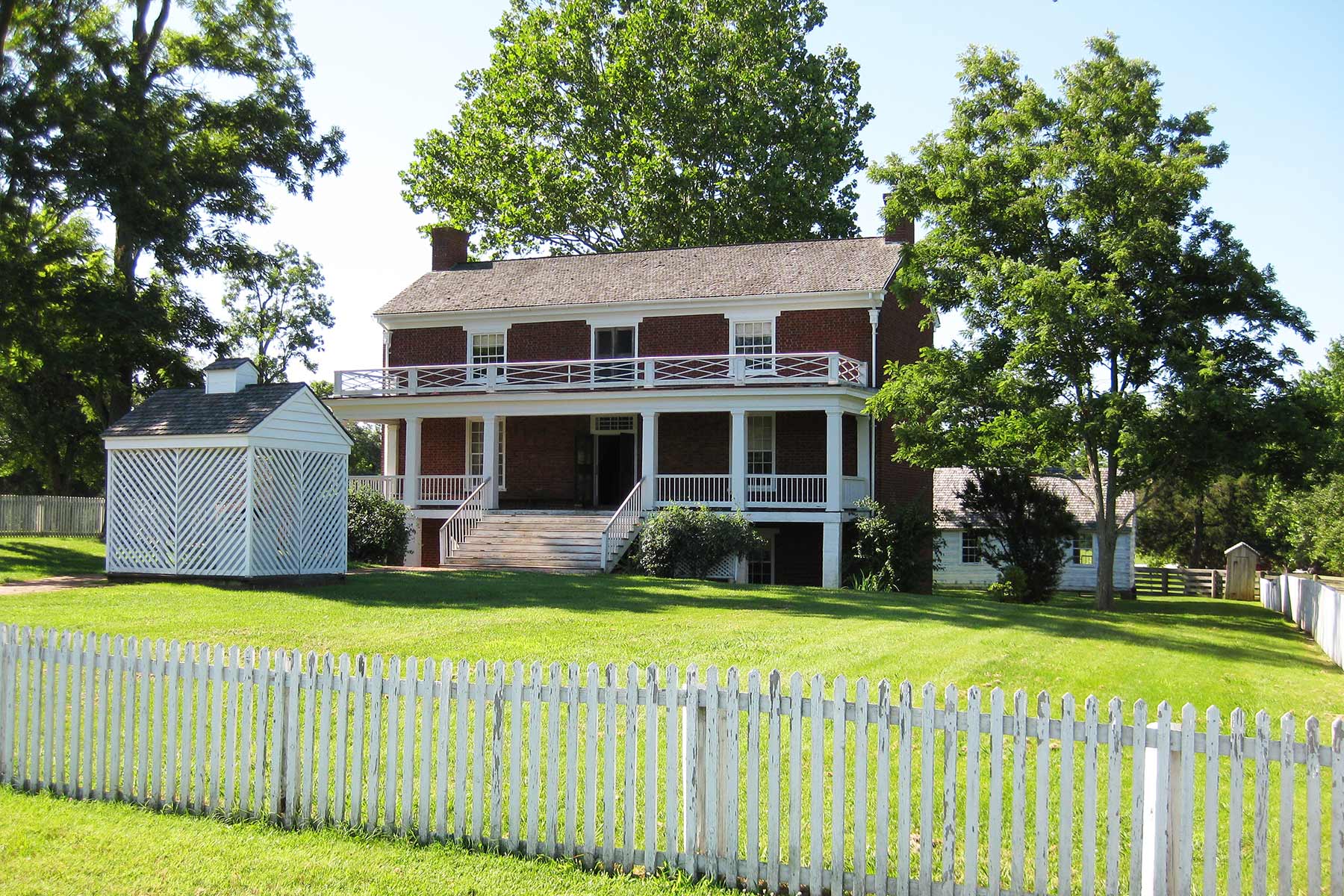
Things To Do
Here are some things you can do while visiting:
- Visit the Visitor Center: The visitor center provides information on the park, its history, and the events that took place here. You can watch a 20-minute film that explains the events leading up to the surrender of the Confederate Army of Northern Virginia to the Union Army of the Potomac.
- Take a guided tour: A guided tour is a great way to learn more about the park’s history and the events that took place here. Rangers lead tours of the historic village and the McLean House, where the surrender was signed.
- Explore the historic village: The historic village includes several restored buildings that date back to the Civil War era. You can visit the courthouse, the tavern, the blacksmith shop, and the jail.
- Visit the McLean House: The McLean House is where General Robert E. Lee surrendered to General Ulysses S. Grant on April 9, 1865. You can tour the house and see where the surrender took place.
- Walk the battlefield trail: The park has several walking trails that allow you to explore the battlefield and learn about the events that took place here.
- Attend special events: The park hosts special events throughout the year, including living history demonstrations, reenactments, and lectures.
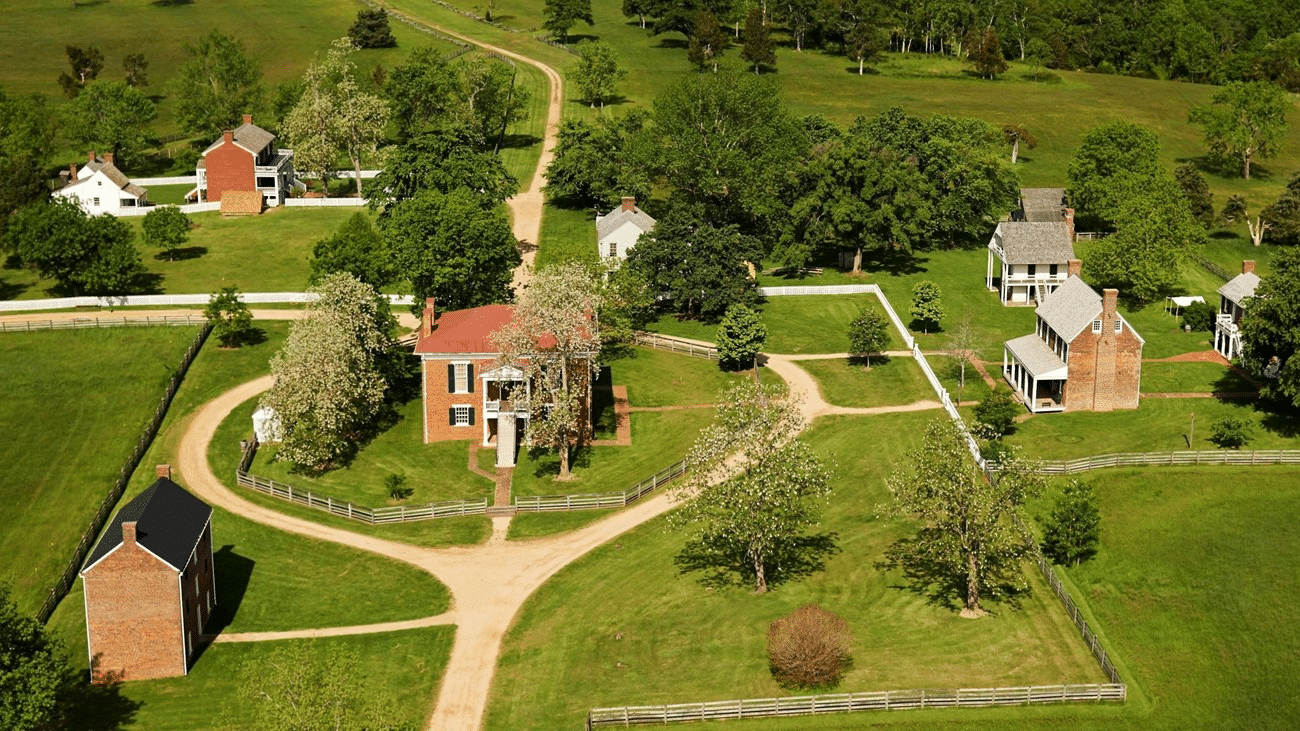
7. Petersburg National Battlefield
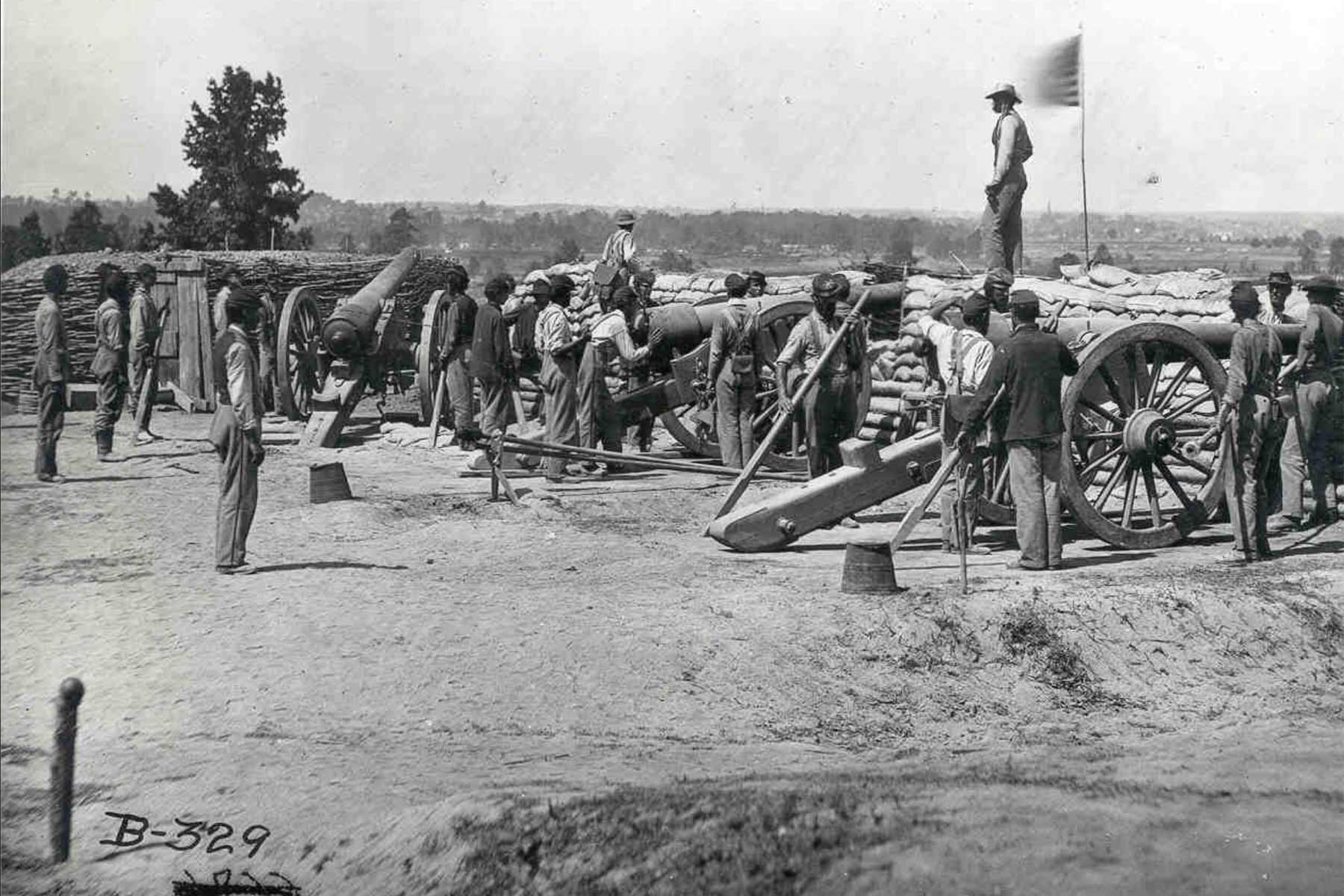
If you’ve noticed a pattern then keep in mind that the key to a Union victory in America’s bloodiest battlefield was to defeat Robert E. Lee’s Army of Northern Virginia and the road to that victory led through Virginia.
For Union General Ulysses S. Grant this meant going through Petersburg. And this site is #7 on our list of the Best Historic Sites In Virginia.
In June 1864, in a brilliant tactical maneuver, Ulysses S. Grant marched his army around the Army of Northern Virginia, crossed the James River unopposed, and advanced his forces to Petersburg.
Knowing that the fall of Petersburg would mean the fall of Richmond, Robert E. Lee swiftly brought his forces to Petersburg doing so just in time to blunt Grant’s offensive.
The Battle of Petersburg was, in reality, the Siege of Petersburg. Given the defenders strong position despite Grant’s superior numbers, his army dug trenches and began a prolonged siege.
Things To Do At Petersburg
Here are some things you can do at the Petersburg National Battlefield:
- Take a self-guided driving tour: The battlefield has a 9-mile self-guided driving tour that takes visitors through the main sites of the Siege of Petersburg.
- Visit the Eastern Front Visitor Center: The visitor center has exhibits and a short film about the Siege of Petersburg, as well as information about the park’s programs and services.
- Take a guided tour: The park offers ranger-led tours of the battlefield and the historic city of Petersburg. Check with the visitor center for tour schedules and availability.
- Hike the trails: The park has several hiking trails that allow visitors to explore the battlefield and the surrounding woods and fields.
- Attend special events: The park hosts special events throughout the year, including living history demonstrations, ranger talks, and reenactments.
- Visit the museums: The park has two museums, the Petersburg National Battlefield Museum and the City Point Museum, which showcase artifacts and exhibits related to the Siege of Petersburg and the history of the region.
- Picnic: The park has several picnic areas where visitors can enjoy a meal surrounded by the beauty and history of the battlefield.
- Bird watching: The park has a variety of habitats, including forests, fields, and wetlands, which provide opportunities for birdwatching.
- Fishing: The park has several ponds and streams that are open to fishing. Check with the park for fishing regulations and permits.

6. Harpers Ferry National Historical Park
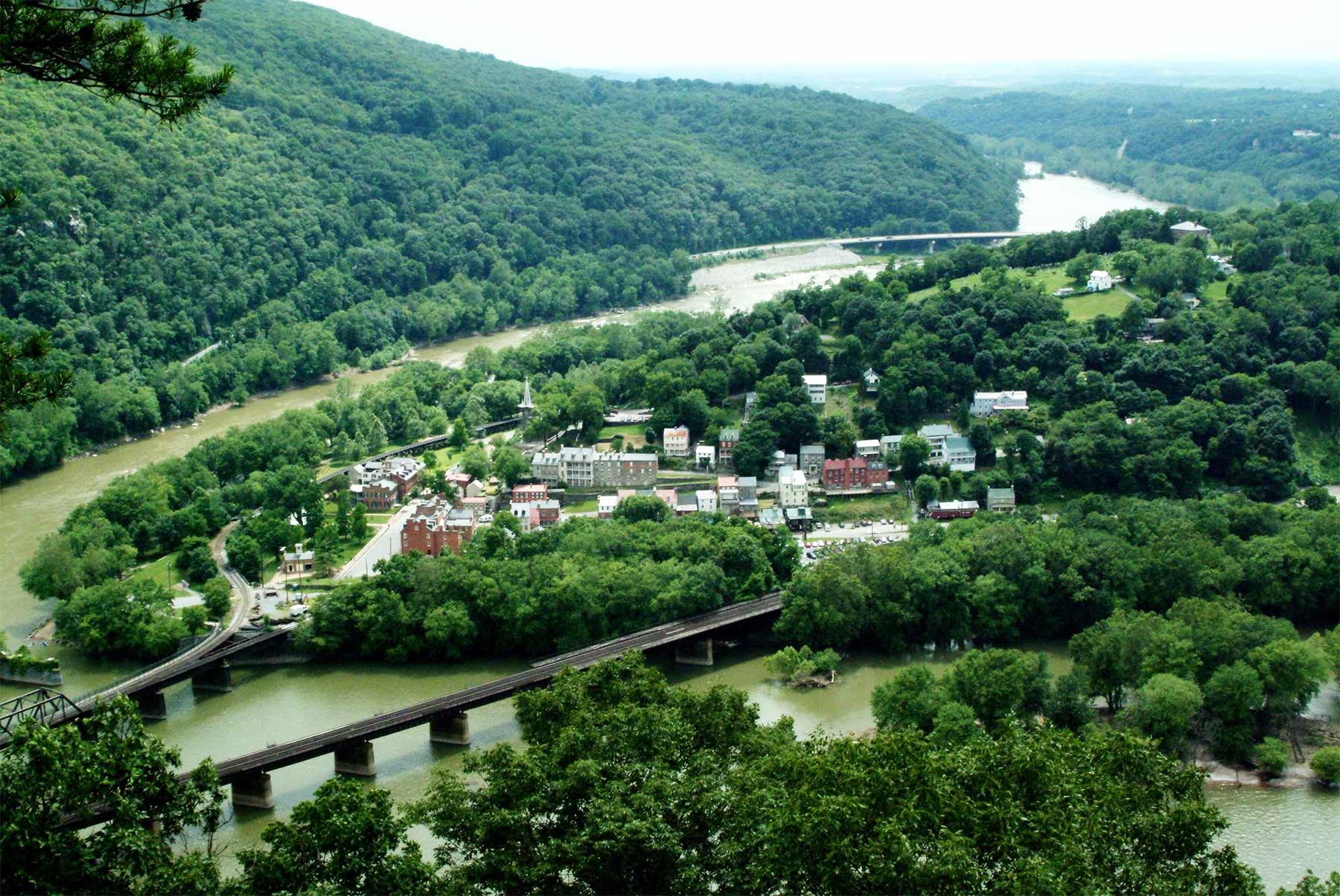
We’re only just getting started when it comes to Virginia and the Civil War. So many amazing sites. So little time. At #6 on our list of the Best Historic Sites In Virginia is the place where the fuse of rebellion was lit. It’s Harpers Ferry National Historical Park.
Here are some of the reasons why Harpers Ferry is an important national historical park:
- John Brown’s Raid: In 1859, abolitionist John Brown led a raid on the federal armory at Harpers Ferry, hoping to start a slave rebellion. The raid failed, but it became a turning point in the nation’s approach to slavery and helped spark the Civil War.
- Industrial Revolution: Harpers Ferry was an important center of industry in the mid-19th century, producing rifles and other weapons for the U.S. government. The town’s location at the confluence of the Potomac and Shenandoah rivers made it a strategic transportation hub, and it was an important stop on the Chesapeake and Ohio Canal.
- Civil War: Harpers Ferry was a key site during the Civil War, changing hands several times between Union and Confederate forces. The town was a major transportation and supply center for Union troops, and its capture by Confederate forces in 1862 was a major setback for the Union.
- African American History: Harpers Ferry was also an important site in African American history. The town was a stop on the Underground Railroad, and many African Americans worked in the armory and other industries in the area.
- Natural Beauty: In addition to its historical significance, Harpers Ferry National Historical Park is known for its stunning natural beauty. The park is located at the confluence of the Potomac and Shenandoah rivers, and it offers opportunities for hiking, fishing, and other outdoor activities.
Things To Do At Harpers Ferry
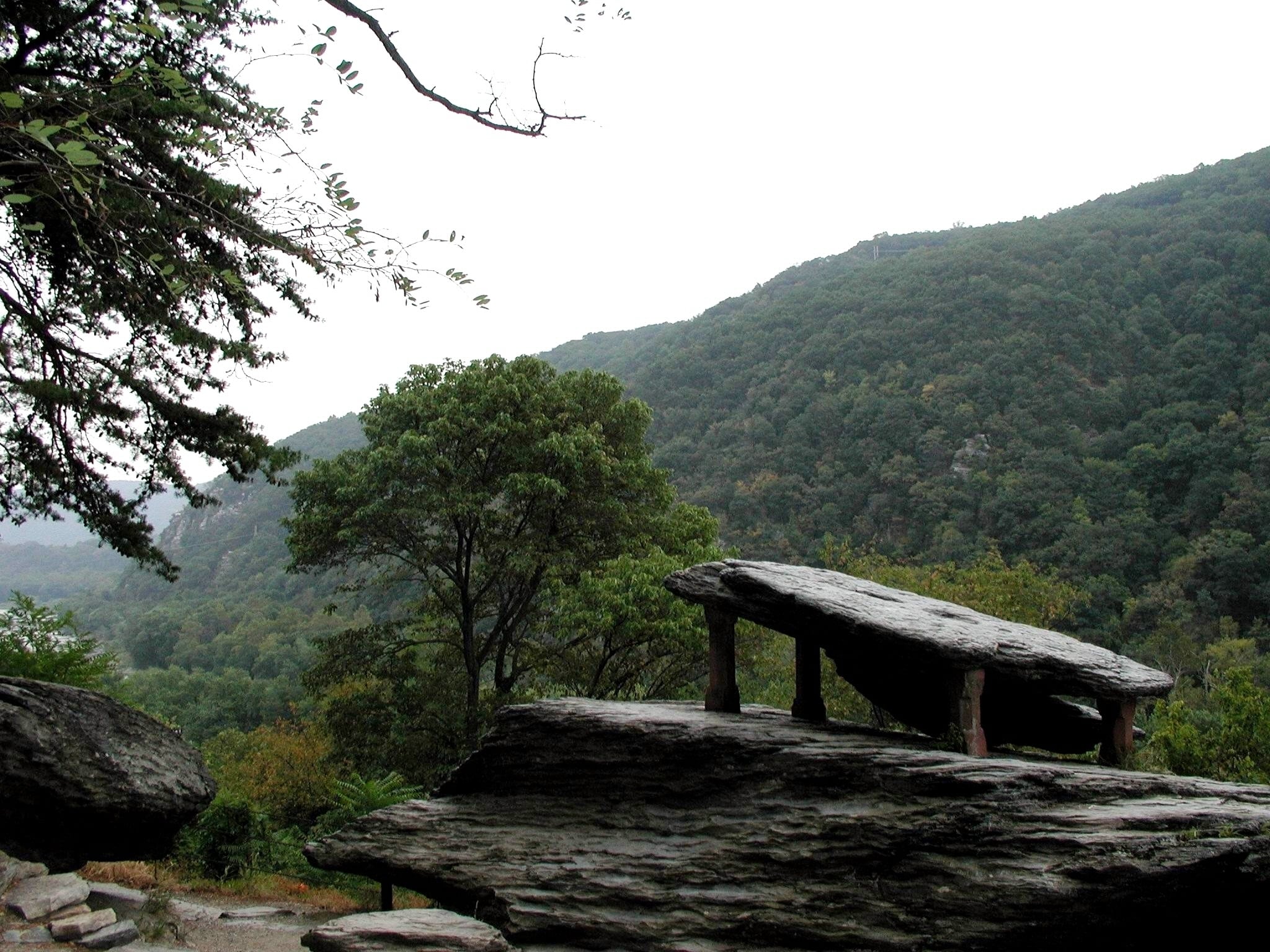
History truly comes to life at Harpers Ferry. There visitors can explore museums and exhibits, hike to overlooks or along Civil War skirmish lines, join a ranger-guided tour or sign-up for a living history workshop.
I recommend beginning your visit at the visitors center where you can pick up helpful information. Rangers are available to answer your questions.
Before heading out to explore the town and its surrounding natural beauty, as a history buff I recommend a stop at the Harpers Ferry Park Association’s Bookshop. It has a wonderful collection of books on the Civil War.
If you’re looking to combine history and nature then check out the 22 miles of hiking trails at Harpers Ferry. It happens to be the mid-point of the 2,178-mile Appalachian Trail.
Picnicking is also available at Harpers Ferry National Historical Park at a designated picnic area adjacent to the Visitor Center parking lot. Picnic tables are on a first-come, first-serve basis.
Check Out Our Harpers Ferry Film
Nestled in the heart of the Shenandoah Valley, Harpers Ferry National Historical Park is a must visit destination for anyone looking to explore America’s past in a picturesque natural setting.
From hiking the Appalachian Trail to exploring the historic town, Harpers Ferry offers an array of exciting opportunities for adventure seekers and history buffs alike.
Journey with More Than Just Parks as we explore an area rich with history, natural beauty, and opportunities to explore. This is Harpers Ferry. Filmed primarily in stunning UHD 8K.
Top 5 Historic Sites In Virginia
5. Booker T. Washington National Monument
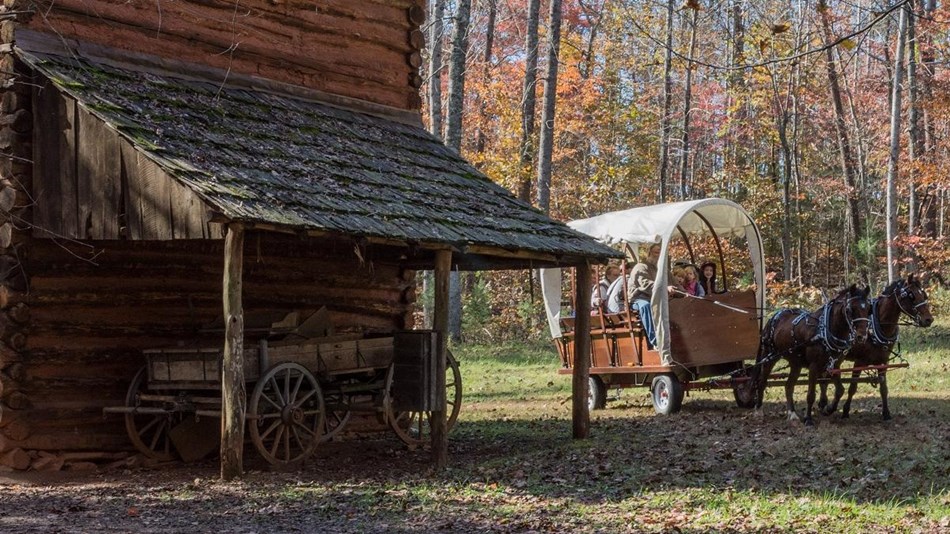
We’re on to the Top 5 Historic Sites In Virginia and its time to take a respite from the American Civil War. At #5 on our list is a place which honors a remarkable member of the African American community. It’s the Booker T. Washington National Monument.
Booker T Washington was the foremost black educator of the late nineteenth and early twentieth centuries. He was one of the most important figures in black public affairs during his time and emerged as an man who survived the horrors of slavery.
On April 5, 1856, Booker T. Washington began life as a slave on the 207-arce farm of James Burroughs. After the Civil War, Washington became founder and first principal of Tuskegee Normal and Industrial School. Later as an adviser, author and orator, his past would influence his philosophies as the most influential African American of his era.
He believed that education was the best means to lift up an oppressed people. Thousands of African-American graduates from The Tuskegee Institute have helped to realize his vision by contribution to the quality of American life.
You can begin your visit to the Booker T. Washington National Monument at the visitor center where you’ll discover exhibits and an audio-visual presentation to familiarize you with the life of Booker T. Washington. There is also a gift shop with books and related items focusing on African American history.
CHECK OUT: 20 BEST Black History Sites In America For You To Visit
Things To Do At The Site
While you’re there, I recommend the following activities:
- The Plantation Trail: It’s a ¼ mile loop through the historic area. It passes by reconstructions of the nineteenth century farm buildings similar to those that stood on the Burroughs Plantation when Booker T. Washington lived here as a boy.
- Farm Area: Explore the farm area where sheep, pigs, horses and chickens provide the atmosphere for this recreated 1850’s tobacco farm.
- Garden Area: There you will learn about the gardening techniques used by owners and slaves on the farm. The garden is an example of a typical subsistence garden of piedmont Virginia of the 1850s.
I also recommend learning more about this remarkable man by reading UP FROM SLAVERY (Annotated): AN AUTOBIOGRAPHY by Booker T. Washington – an American Slave, his Life from slavery to freedom, Slavery in the South and the American Abolishment of Slavery.

4. Manassas National Battlefield
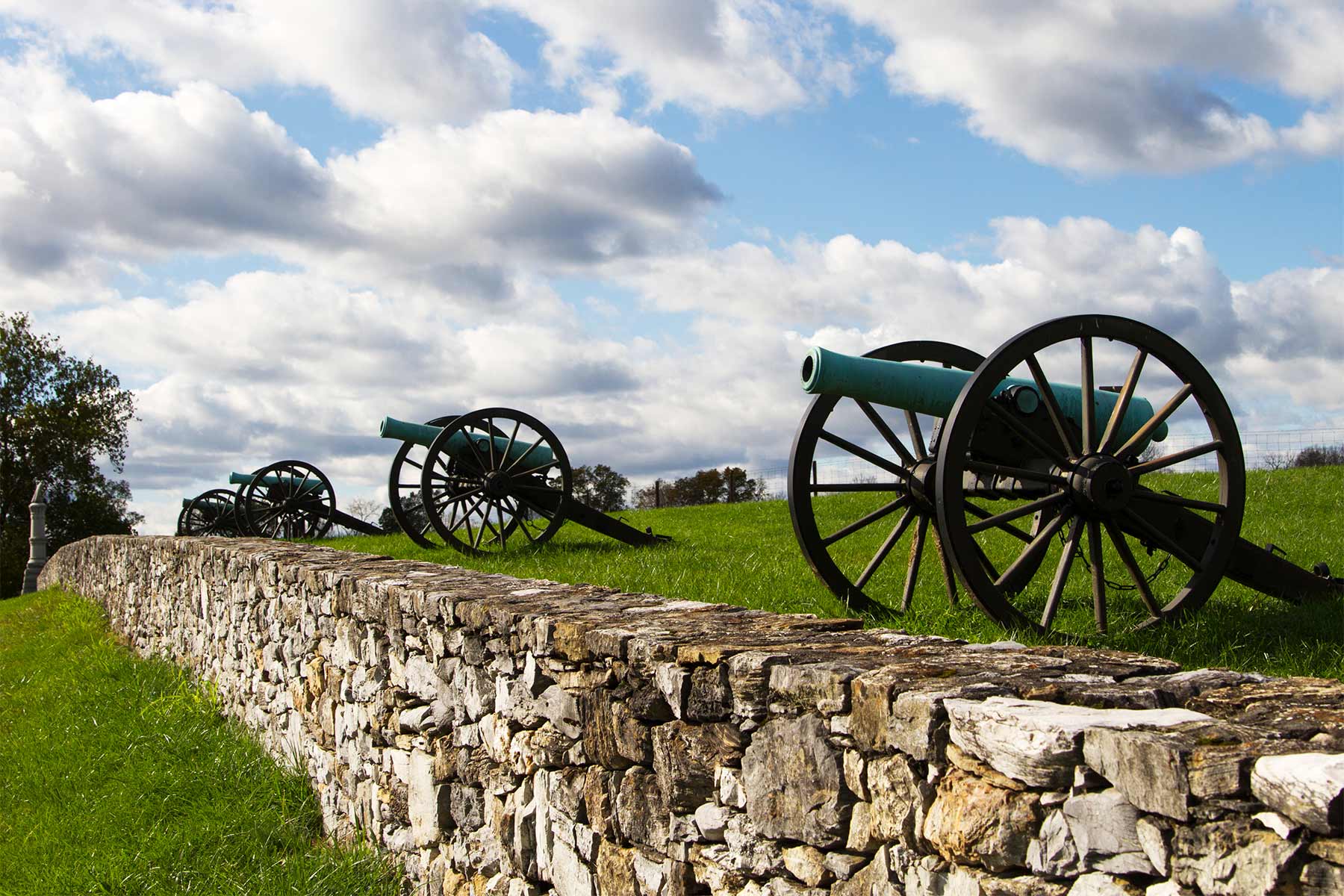
If you don’t go looking for the Civil War in Virginia then it may come looking for you. So many amazing site! We’re on to the “Final Four.”
We’ve already reviewed the place where the war ended, but our next site, at #4, is the place where the first major battle of the American Civil War was fought. It’s Manassas National Battlefield.
On July 21, 1861, two armies clashed for the first time on the fields overlooking Bull Run.
The First Manassas or First Battle of Bull Run resulted in thousands of lives lost and is referred to as the first major land battle of the American Civil war.
The battle began when about 35,000 Union troops, led by General Irwin McDowell, marched from the federal capital in Washington, D.C. to strike a Confederate force of 20,000, led by General Pierre G.T. Beauregard, along a small river known as Bull Run.
“There Stands Jackson Like A Stone Wall”
After fighting on the defensive for most of the day, the rebel forces under the leadership of General Thomas “Stonewall” Jackson rallied and were able to break the Union right flank, sending the Federals into a chaotic retreat towards Washington. Jackson managed to snatch victory from the jaws of defeat just when it appeared that all was lost for the Confederates.
The Confederate victory gave the South a surge of confidence and shocked many in the North, who realized the war would not be won as easily as they had hoped.
An excellent book on this important battle would be The First Battle of Manassas: An End to Innocence by John J. Hennessy.
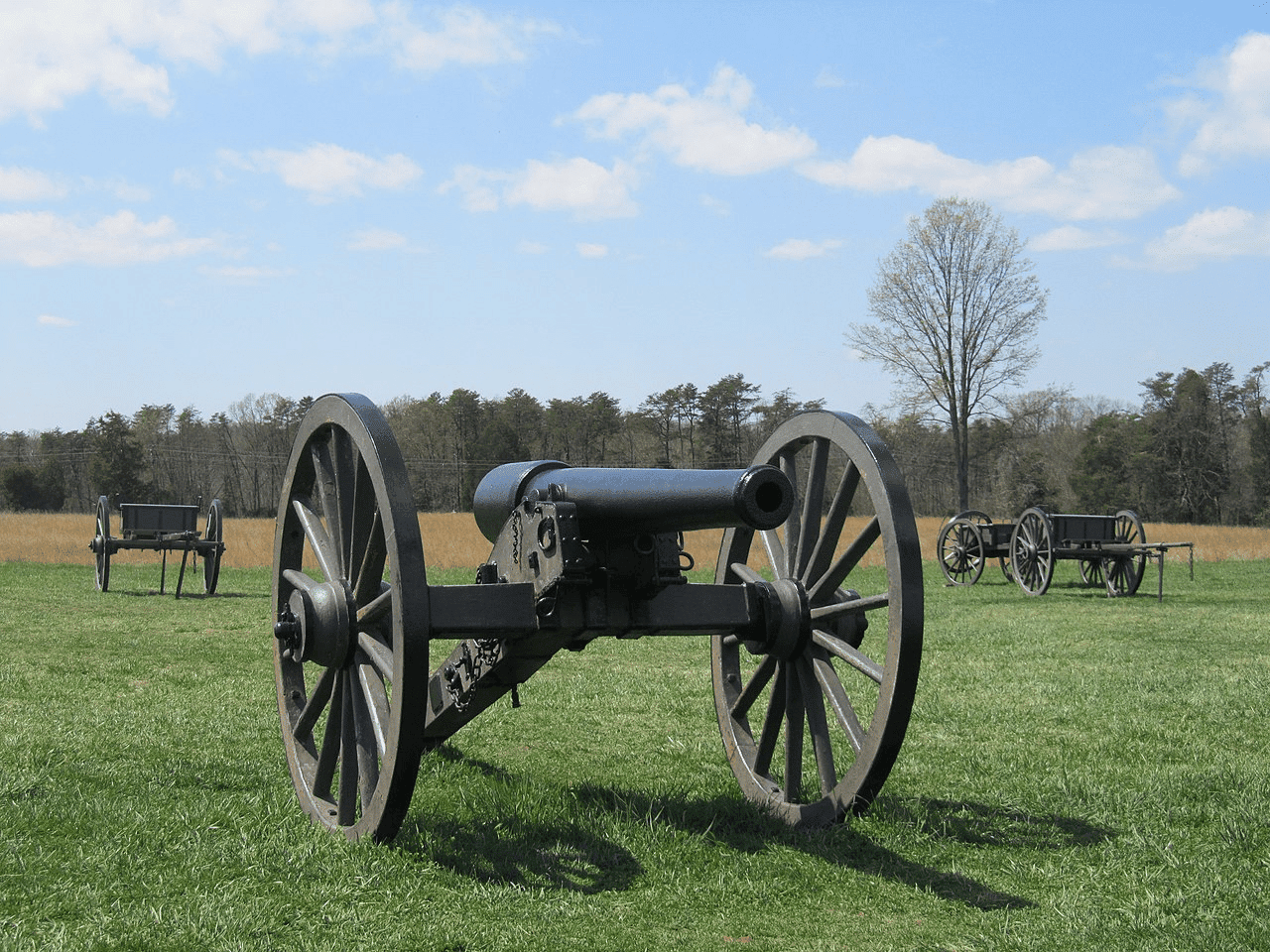
“There is Jackson standing like a stone wall! Let us determine to die here, and we will conquer!”
-Brigadier General Barnard E. Bee
Things To Do At Manassas
Some of the things to do at Manassas National Battlefield include:
- Explore the battlefield: The park offers numerous trails and walking paths that allow visitors to explore the battlefield and get a sense of the terrain and the scale of the battles that took place there.
- Take a guided tour: The park offers a variety of guided tours led by knowledgeable rangers and volunteers. These tours provide visitors with a more in-depth understanding of the battles and the events that took place on the battlefield.
- Visit the Henry Hill Visitor Center: The visitor center is a great starting point for any visit to the park. Here, visitors can watch an introductory film, view exhibits, and get information about the park and its history.
- Attend a special event: The park hosts a variety of special events throughout the year, including living history demonstrations, ranger-led talks, and commemorative ceremonies.
- Visit the Stone House: The Stone House is a historic building that served as a hospital during the first Battle of Manassas. Today, it is a museum that tells the story of the role that hospitals played during the Civil War.
- Picnic and enjoy the scenery: The park offers numerous picnic areas and scenic vistas where visitors can relax and take in the natural beauty of the surrounding landscape.
3. First Landing State Park
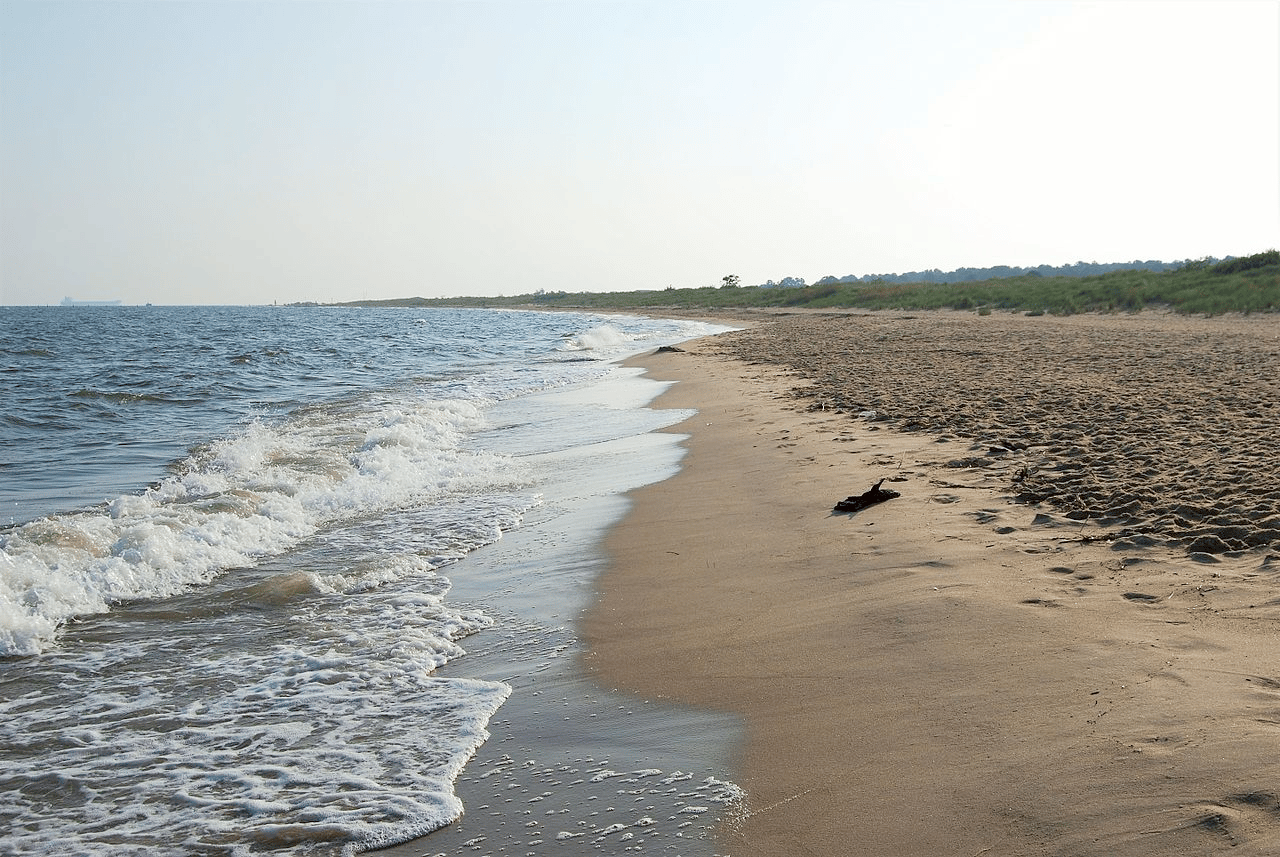
While we’re More Than Just Parks, we don’t like to forget about them altogether, which is why we’re taking a break from our Civil War sites to turn to another magnificent place to visit. At #3 on our list of the Best Historic Sites In Virginia is First Landing State Park.
First Landing State Park is a 2,888-acre park located in Virginia Beach, Virginia. The park has a rich history that dates back to the arrival of the first English settlers in America.
In 1607, a group of 104 English settlers led by Captain Christopher Newport sailed from England to America in search of a new life. They landed at a site near the park, which is now known as the Cape Henry area. This area is marked by a monument that commemorates the arrival of the settlers and their first steps on American soil.
It Was Originally Established As Seashore State Park
The park was established in 1933 as Seashore State Park and was later renamed to First Landing State Park in 1997 to recognize its historic significance. The park offers a variety of recreational activities, including hiking, biking, boating, and fishing. It is also home to a 1.5-mile beach that is popular with visitors.
The park has several historic sites, including the Cape Henry Lighthouse, which was built in 1792 and is the oldest lighthouse in Virginia. The park also has a museum, which features exhibits on the park’s history and the Native American tribes that once inhabited the area.
Today, First Landing State Park is a popular destination for visitors looking to experience the natural beauty of Virginia and to learn about the area’s rich history. It is considered an important site for understanding the early history of America and the role that Virginia played in the formation of the United States.
2. George Washington Birthplace National Monument
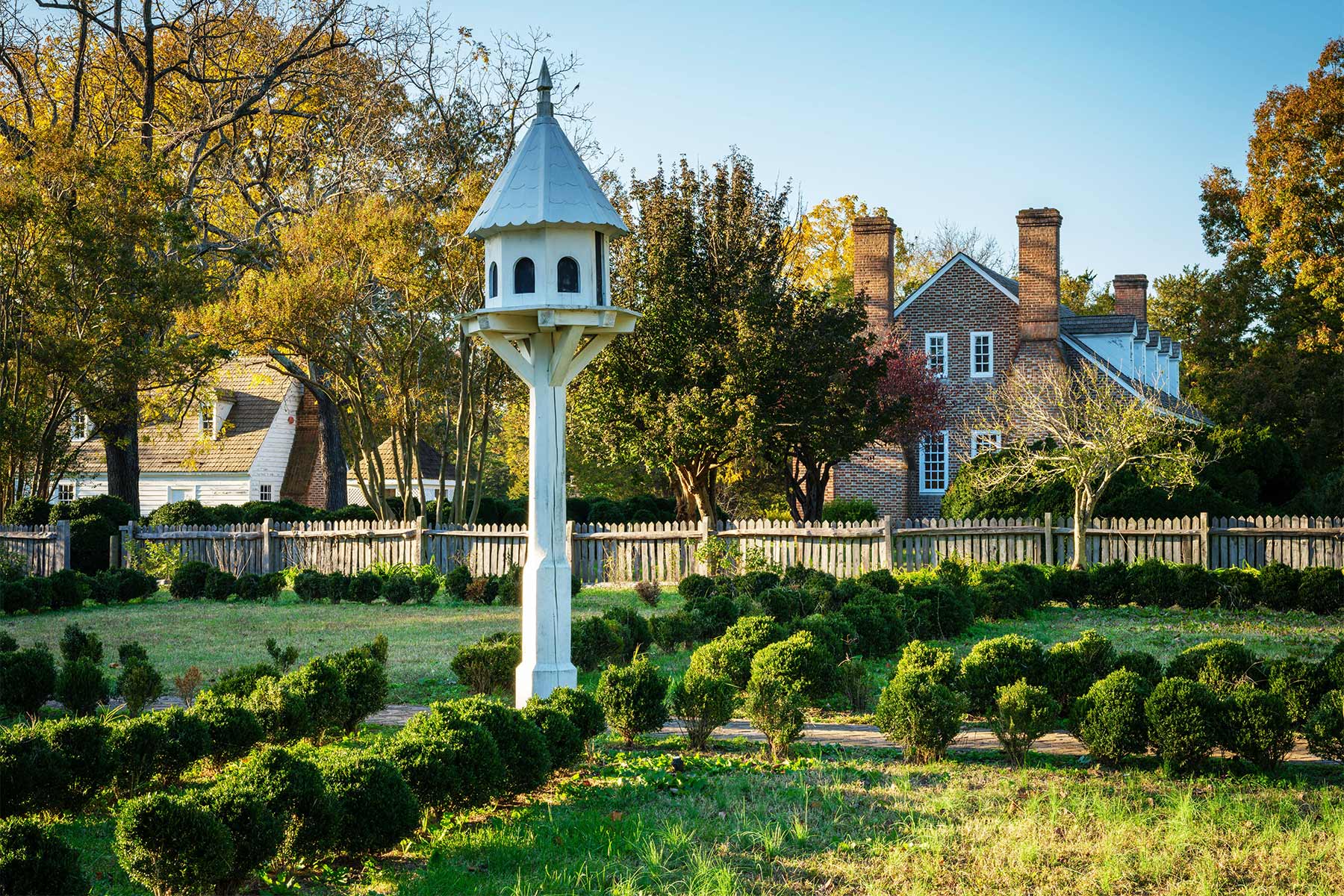
We’re down to our final two historic sites. In the runner-up position at #2 is a site which honors the only man to actually have a state named after him. It’s the George Washington Birthplace.
He not only served as the first president of the United States, but he also commanded the Continental Army during the American Revolution (1775–83) and presided over the convention that drafted the U.S. Constitution.
First and foremost, George Washington’s birthplace is a place of history. It encompasses 550 acres of the former Popes Creek Plantation, the American ancestral home of the Washington Family where George Washington was born.
It includes the Memorial House Museum which gives its visitors the appearances of an 18th century plantation environment.
Outdoor Activities
Visitors can enjoy a hike along the Nature Trail or the Dancing Marsh Loop Trail at George Washington Birthplace National Monument. You will see different habitats that are home to a variety of plants and animals.
If you prefer biking to hiking then you’re in luck. Visitors can bicycle through George Washington Birthplace National Monument and enjoy nature’s tranquility in a historic setting while they’re doing it.
There’s even fishing too. The park allows fishing as a means of providing for public enjoyment and regulates it to ensure that it is managed in a manner that avoids unacceptable impacts to park resources.
1. Fredericksburg & Spotsylvania National Military Park

Map of Fredericksburg and Spotsylvania National Military Park | Courtesy of NPS
Drum roll please! More Than Just Parks #1 Historic Site In Virginia is a place connected to the American Civil War.
Given the integral role which the state played in the conflict, how could it be otherwise? This is no ordinary site however. It’s actually four sites rolled into one. It’s Fredericksburg & Spotsylvania National Military Park.
There’s no single location which encompasses more important battles of the American Civil War than the Fredericksburg & Spotsylvania National Military Park.
Four battles, Chancellorsville, Fredericksburg, Spotsylvania and the Wilderness were all fought there.
So many books have been written and so much history has been taught about these four battles and their impact on America’s bloodiest conflict.
Fredericksburg
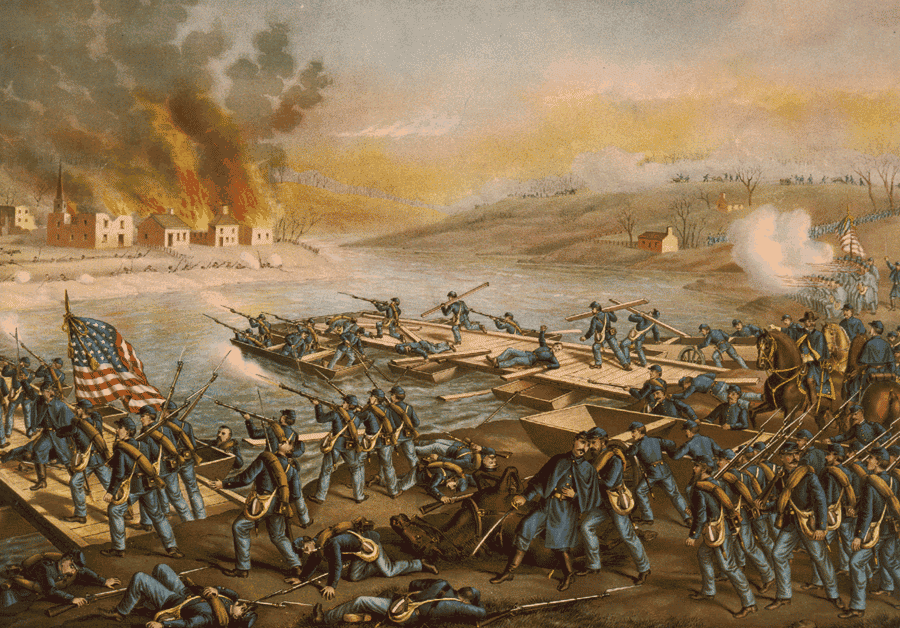
The Battle of Fredericksburg was one of the largest and deadliest battles of the Civil War with almost 20,000 casualties on both sides.
It featured the first opposed river crossing in American military history as well as the Civil War’s first instance of urban combat. It ended in a victory for the Confederacy.
Chancellorsville
The Battle of Chancellorsville (April 30-May 6, 1863) was also a huge victory for the Confederacy and General Robert E. Lee.
It was considered to be Lee’s greatest victory as a much larger Union force failed to encircle and destroy the Confederate Army of Northern Virginia.
The South, however, did lose the services of one of its most brilliant generals as Thomas “Stonewall” Jackson was mistakenly killed by his own soldiers while returning from a reconnaissance mission.
Grant Takes Command
The bloody Battle of the Wilderness, in which no side could claim victory, marked the first stage of a major Union offensive toward the Confederate capital of Richmond.
This was the first battle in which Union Commander Ulysses S. Grant faced off against Confederate Commander Robert E. Lee.
It was part of Grant’s “Overland Campaign,” which was a relentless drive to finally defeat Robert E. Lee’s Army of Northern Virginia and capture the South’s capital at Richmond, Virginia.
The Battle That Became A Siege

The last of these four battles fought on the ground which is today Fredericksburg & Spotsylvania National Military Park was the Battle of Spotsylvania.
This battle was fought after Grant brilliantly repositioned his forces. Robert E. Lee, however, guessing Grant’s intention was to outflank him, take Petersburg, and then march on to Richmond, rushed forces there to check Grant’s move.
And so it began in May of 1864. A battle which pitted 100,000 Union troops against 52,000 Confederates.
The fiercest fighting occurred in pouring rain on May 12. For 23 hours straight the two sides fought hand-to-hand in a field near fortifications known as the Mule Shoe, and afterward as the Bloody Angle.
After being repulsed again and again, Grant relied on his “essential arithmetic.”
He had his men prepare for a siege. Lee understood then that it was only a matter of time before he would have to withdraw which would likely mean the end for the Confederacy.
CHECK OUT: 10 BEST Civil War Sites In America
Things To See & Do
The Fredericksburg & Spotsylvania National Military Park combines natural beauty with historical significance. At each of the aforementioned battlefields, there are excellent hiking trails.
There’s also an audio tour which is available through the National Park Service app. It features historical points of interest including:
- The Sunken Road: This is where wave after wave of Union soldiers marched towards the Confederate lines, but none made it closer than 50 yards. Confederate troops behind the stone wall and atop Marye’s Heights held the high ground with their well-defended line thereby inflicting high casualties on the attacking force.
- Chatham Manor: Originally established as a slave plantation, Chatham embodies the main cause of the Civil War: the desire of white Southerners to maintain and protect the institution of slavery and the resulting material wealth that slavery produced for them.
- Lee’s Hill: Also known as Telegraph Hill, this is where Confederate General Robert E. Lee made his headquarters in anticipation of battle.
- Howison Hill: It was named for the Howison family that lived nearby. It was an artillery position during the battle of Fredericksburg.
- Union Breakthrough: This is where Union General George Gordon Meade’s 4,500-man division broke through the Confederate line they surprised unprepared South Carolinians. Soon the Confederates rallied, and without reinforcements nearby, Meade’s men could not hold their position against Confederate General Stonewall Jackson’s 38,000-man corps.

If you’re interested in learning what other amazing places Virginia has to offer then check out 30 EPIC Virginia National Parks Worth Visiting.
List Of Historical Sites In Virginia
- Fredericksburg & Spotsylvania National Military Park
- George Washington Birthplace National Monument
- First Landing State Park
- Manassas National Battlefield
- Booker T. Washington National Monument
- Harpers Ferry National Historical Park
- Petersburg National Battlefield
- Appomattox Court House
- Fort Monroe National Monument
- Richmond National Battlefield Park
- Mount Vernon
- Historic Arlington National Cemetery
- Monticello
- Edgar Allen Poe Museum
- Jamestown Settlement
Why Trust Us About Historic Sites In Virginia?
We’re Jim Pattiz and Will Pattiz, collectively known as the Pattiz Brothers and we absolutely LOVE the national parks.
You should probably know that we don’t just make this stuff up out of thin air. We’ve spent our entire adult lives exploring and filming America’s national parks and public lands.
We’ve worked with the National Park Service, the Department of Interior, USDA, U.S. Forest Service, and more for years creating films on important places and issues. Our work has been featured in leading publications all over the world and even some people outside of our immediate family call us experts on the national parks.
And, in 2018, our father – having spent a lifetime teaching history – joined us so that he could help us to tell the stories behind these amazing places.
Meet The Parks Brothers
We Hope You’ll Follow Our Journey

Our goal here at More Than Just Parks is to share the beauty of America’s national parks and public lands through stunning short films in an effort to get Americans and the world to see the true value in land conservation.
We hope you’ll follow our journey through the parks and help us to keep them the incredible places that they are. If you’re interested in joining the adventure then sign up below!
Related Links
What Is A National Park? To learn more about the difference between the various National Park Service designations check out our article that explains everything!
Civil War Sites: Top 10 Best Civil War Sites & Battlefields
Virginia National Parks: 30 EPIC Virginia National Parks Worth Visiting

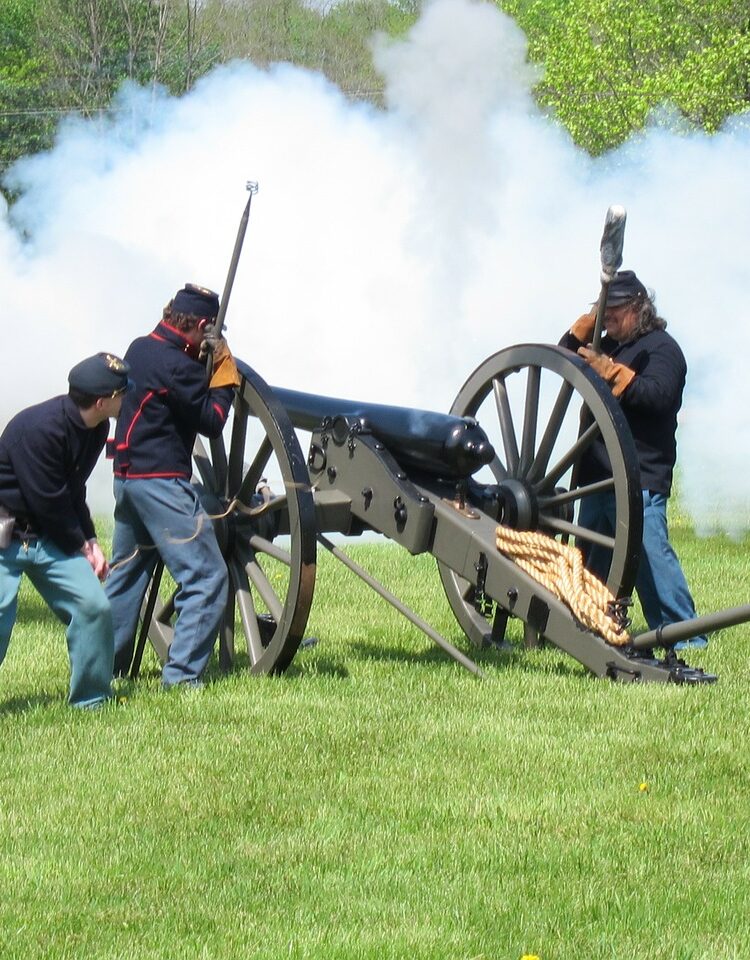

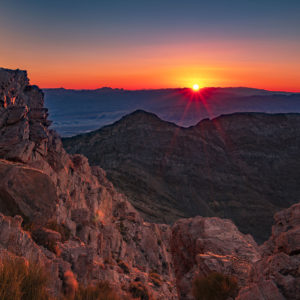

@Tony, I believe that you forgot to include the most interesting anecdote to the casemate/Fort Monroe blurb, about Robert E. Lee being the engineer for the Fort during his tenure in the Army Corps of Engineers! There are many articles about it; however, this one is from one of our local publications you may enjoy reading: